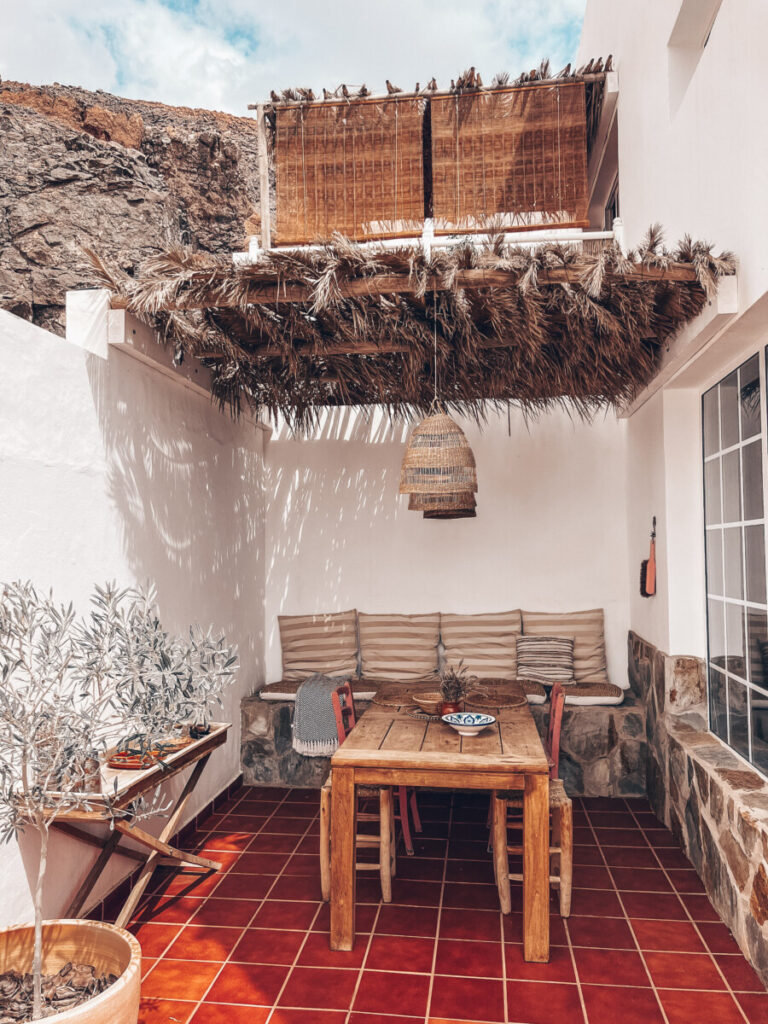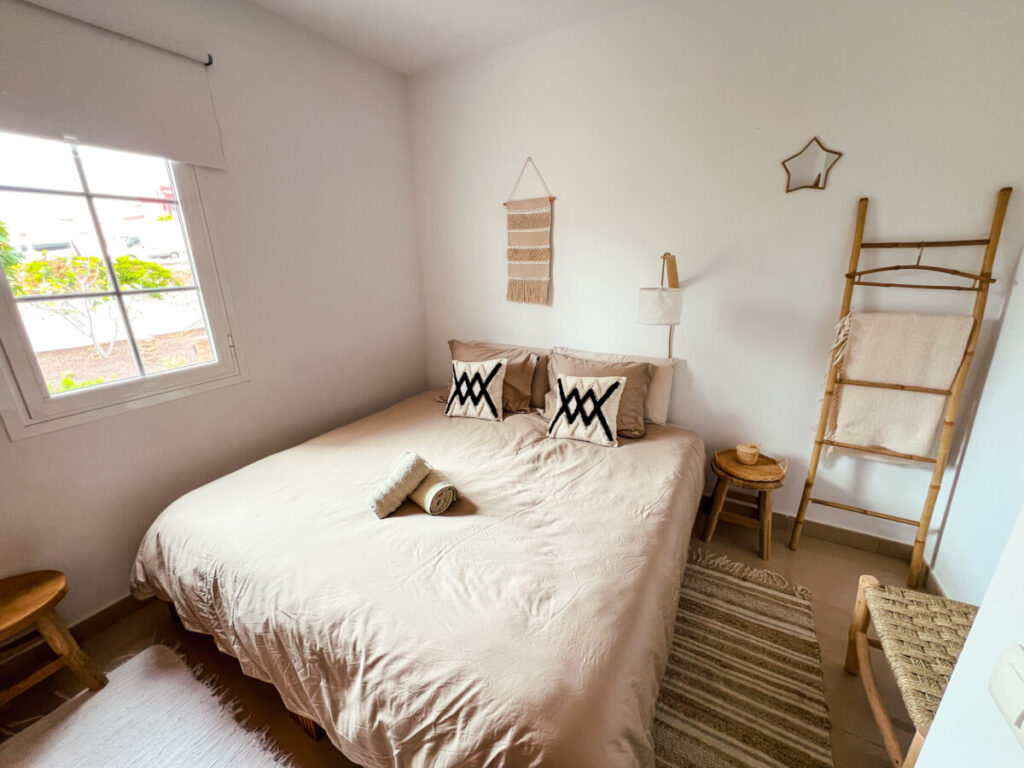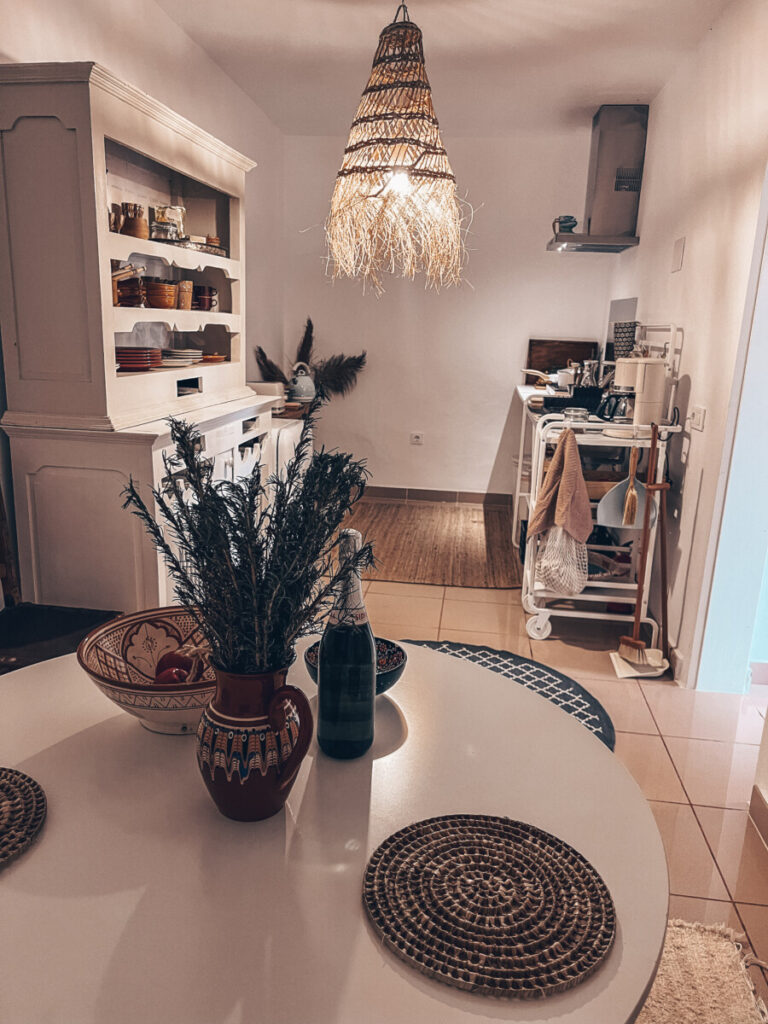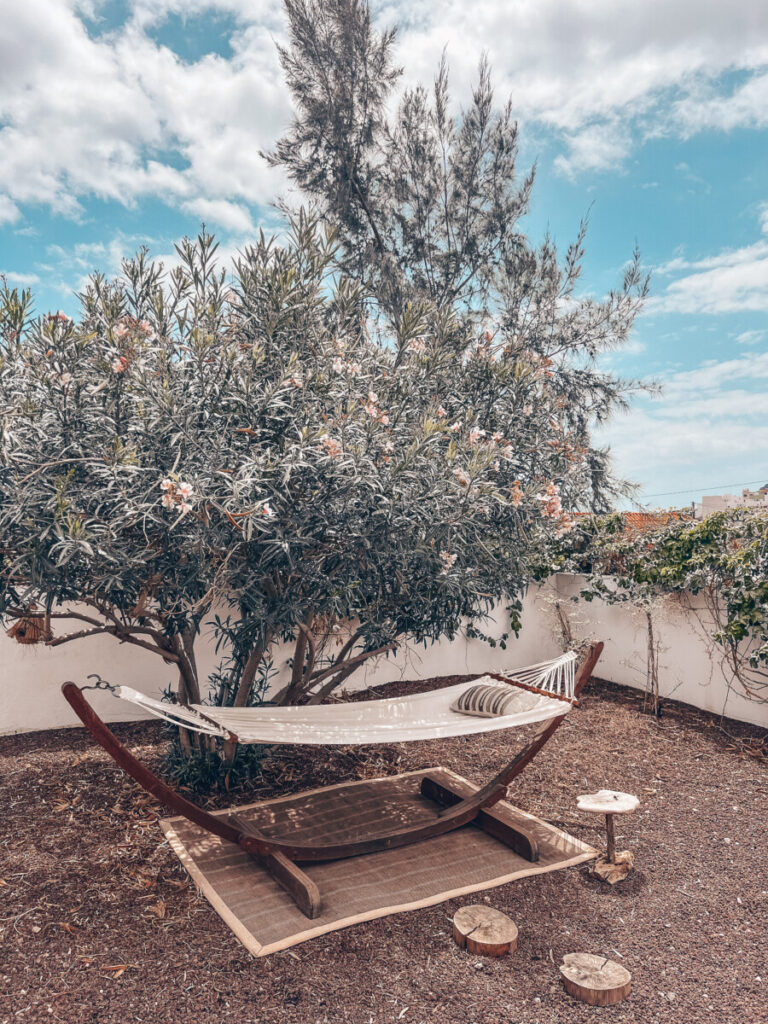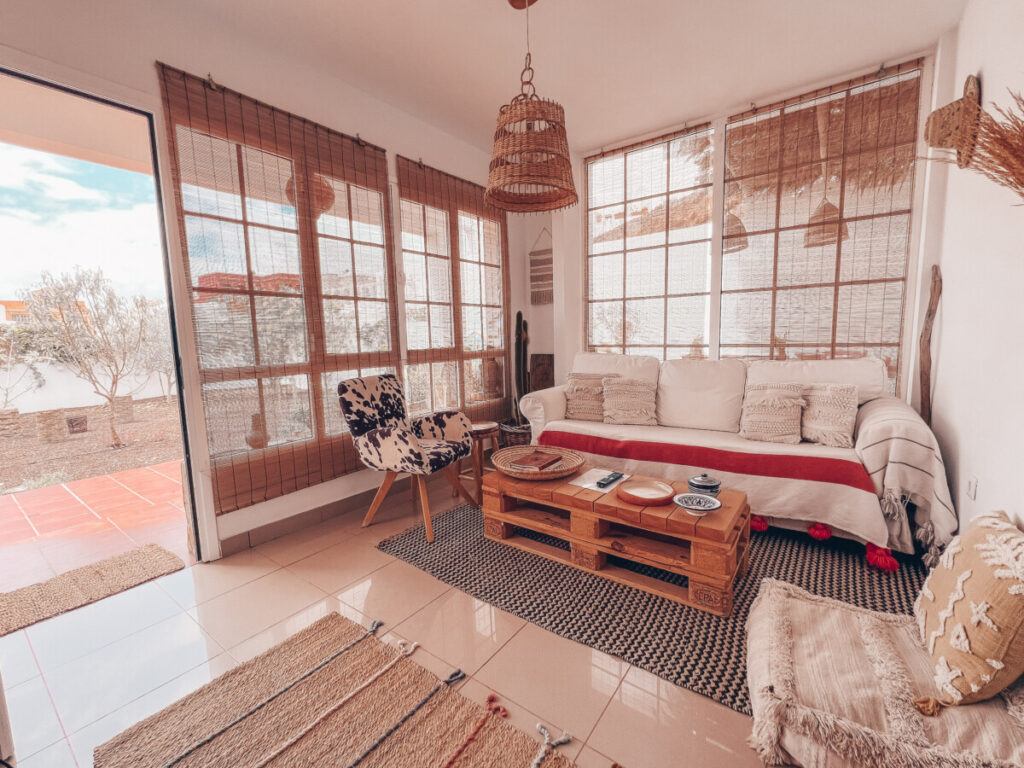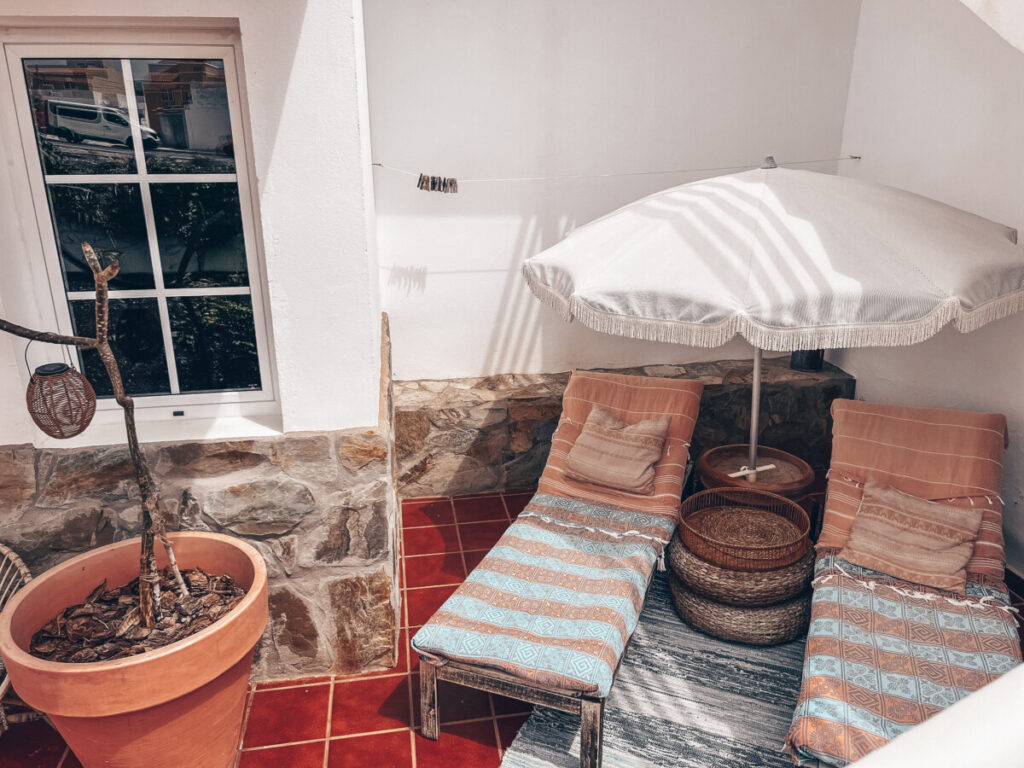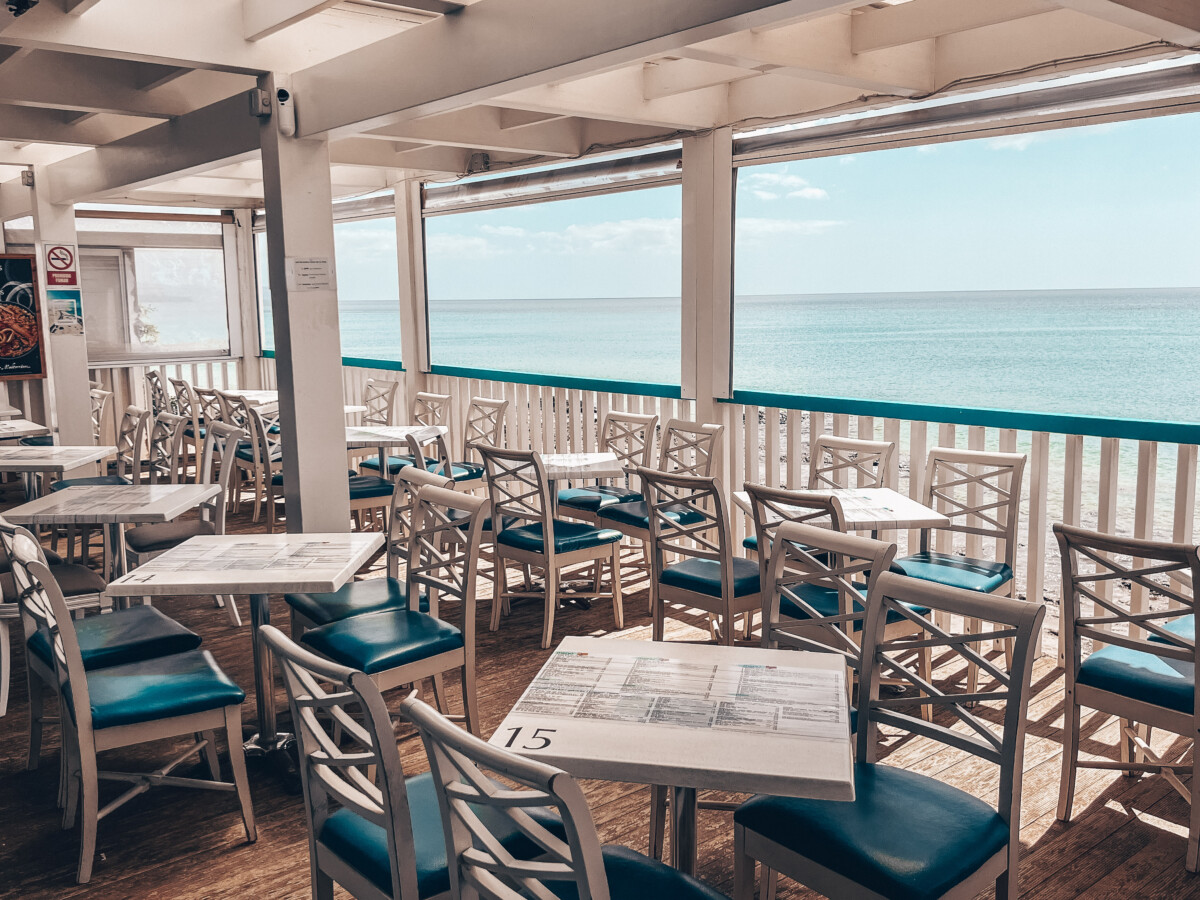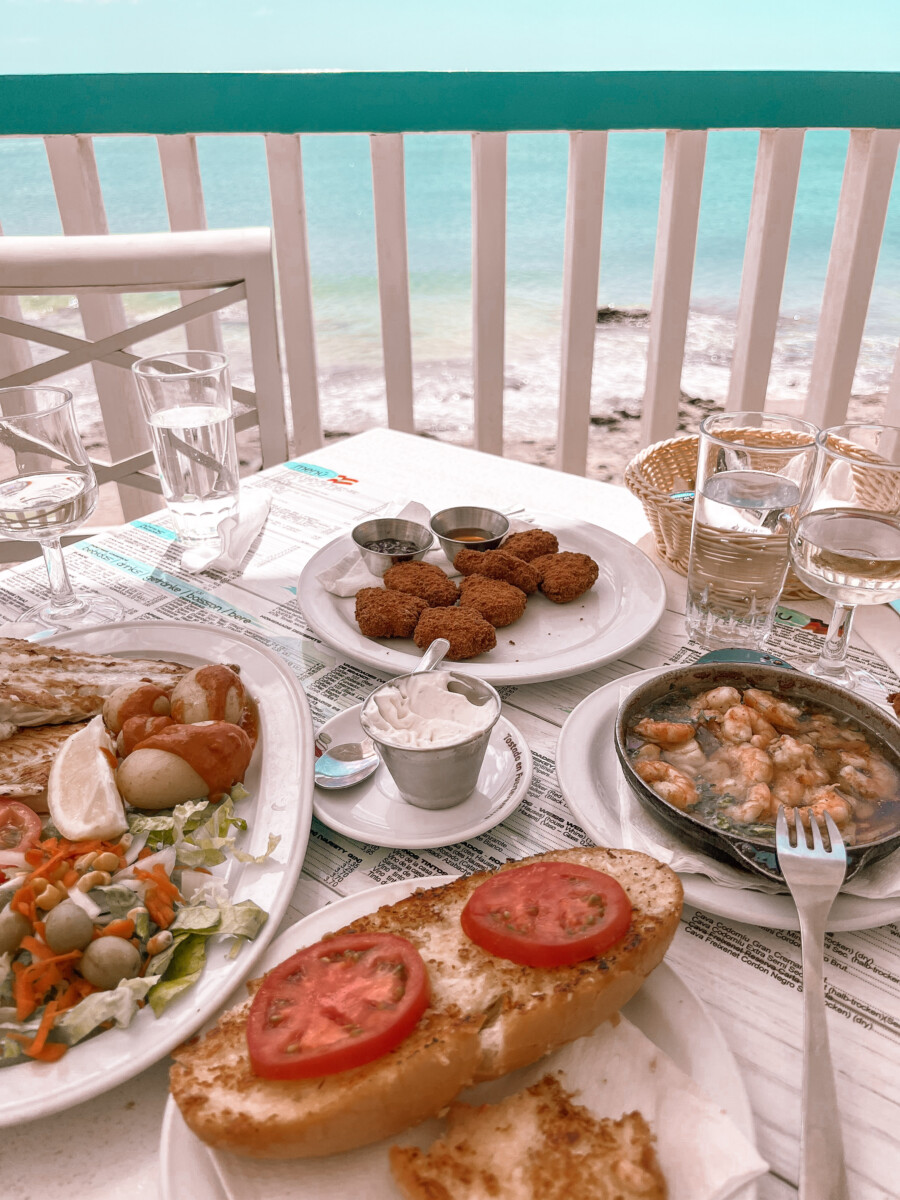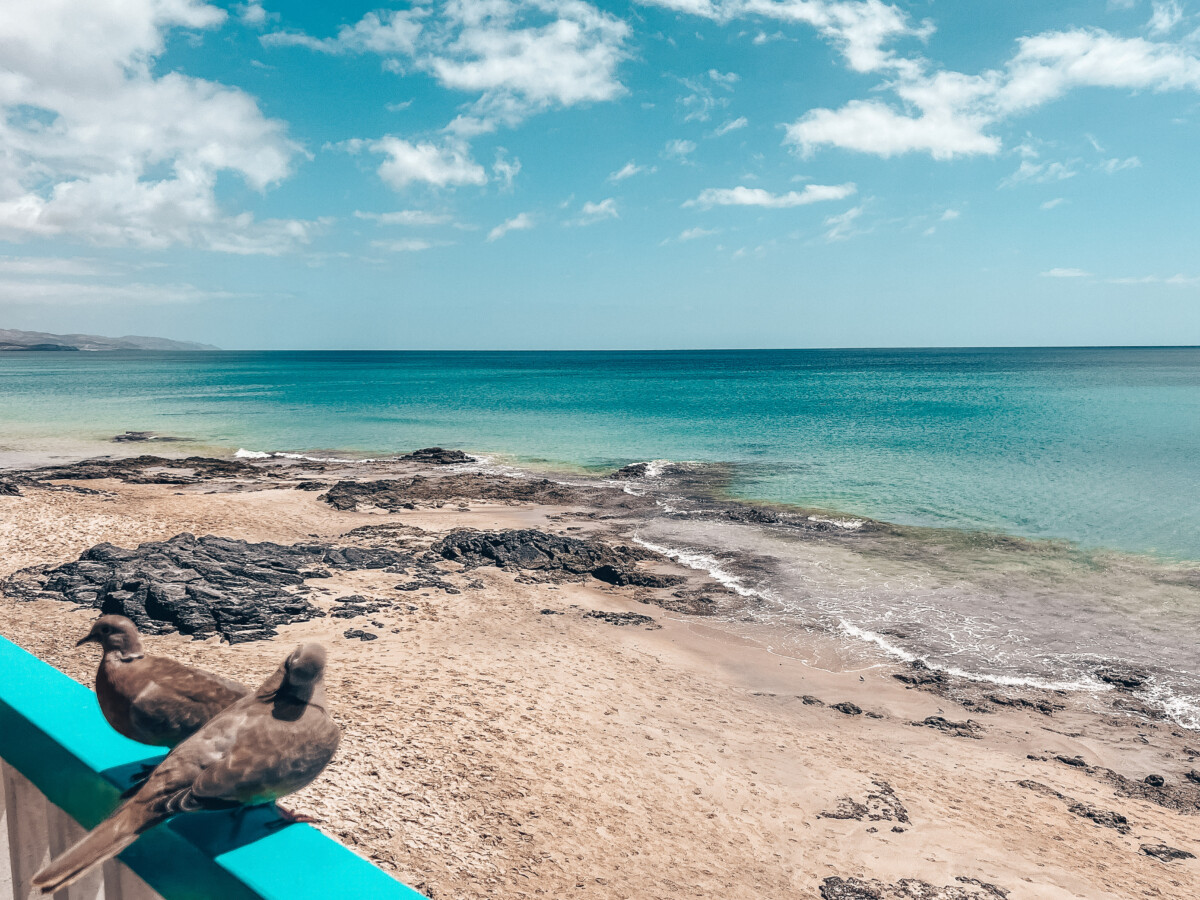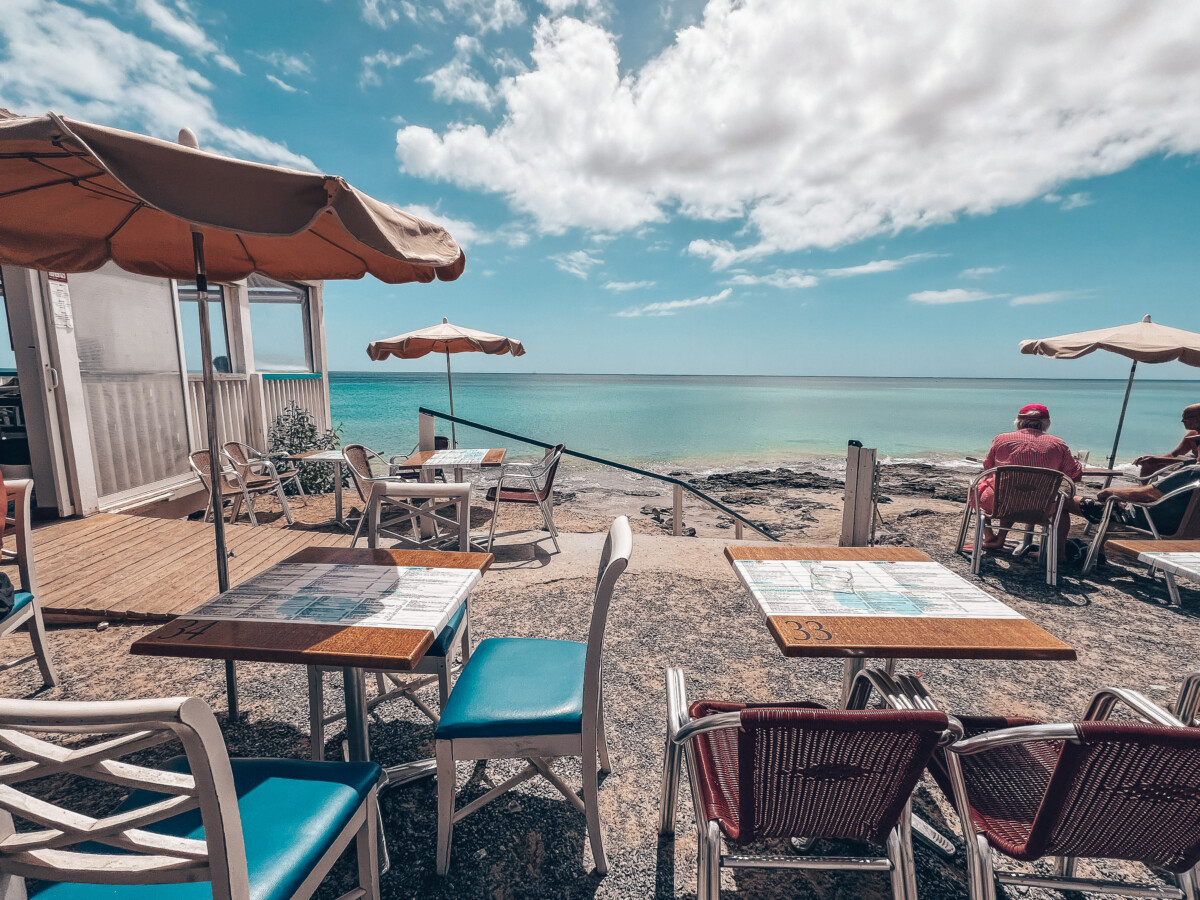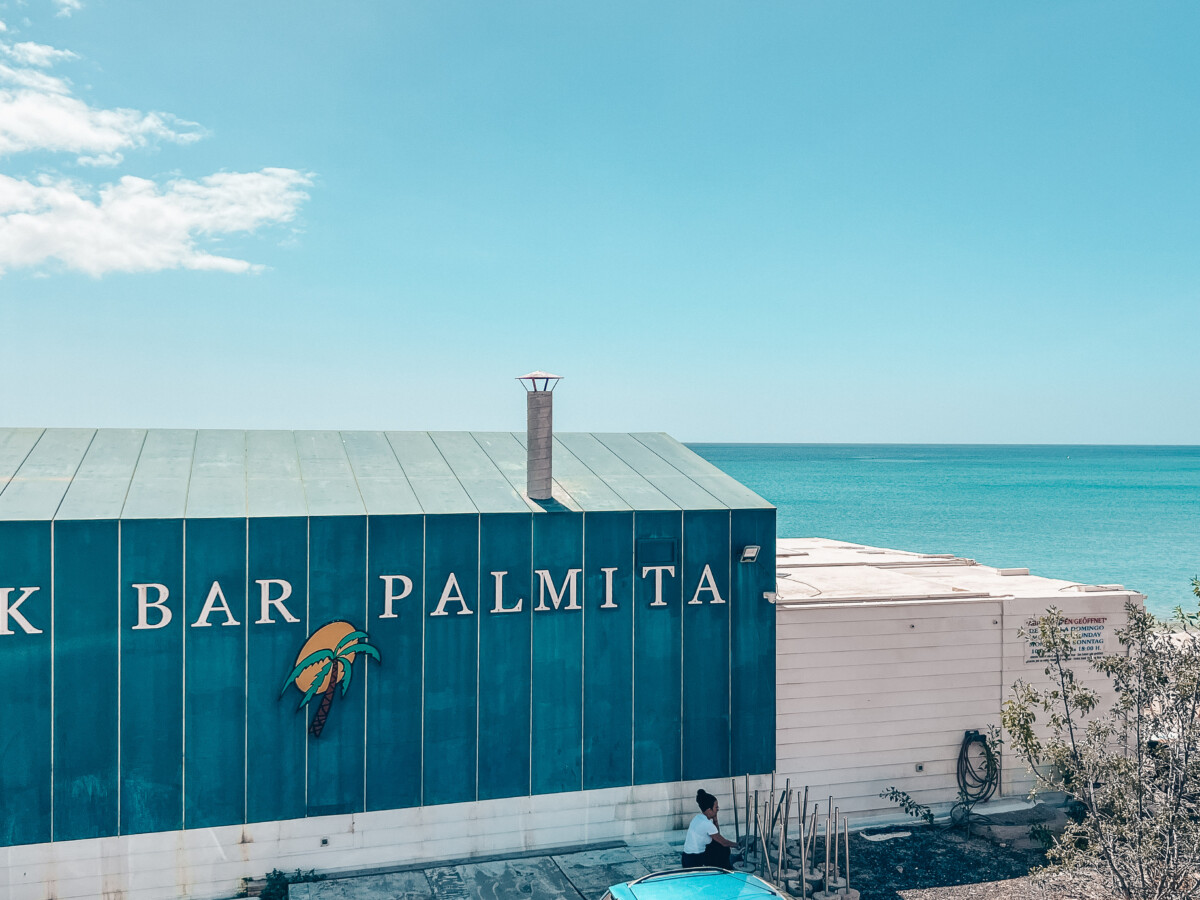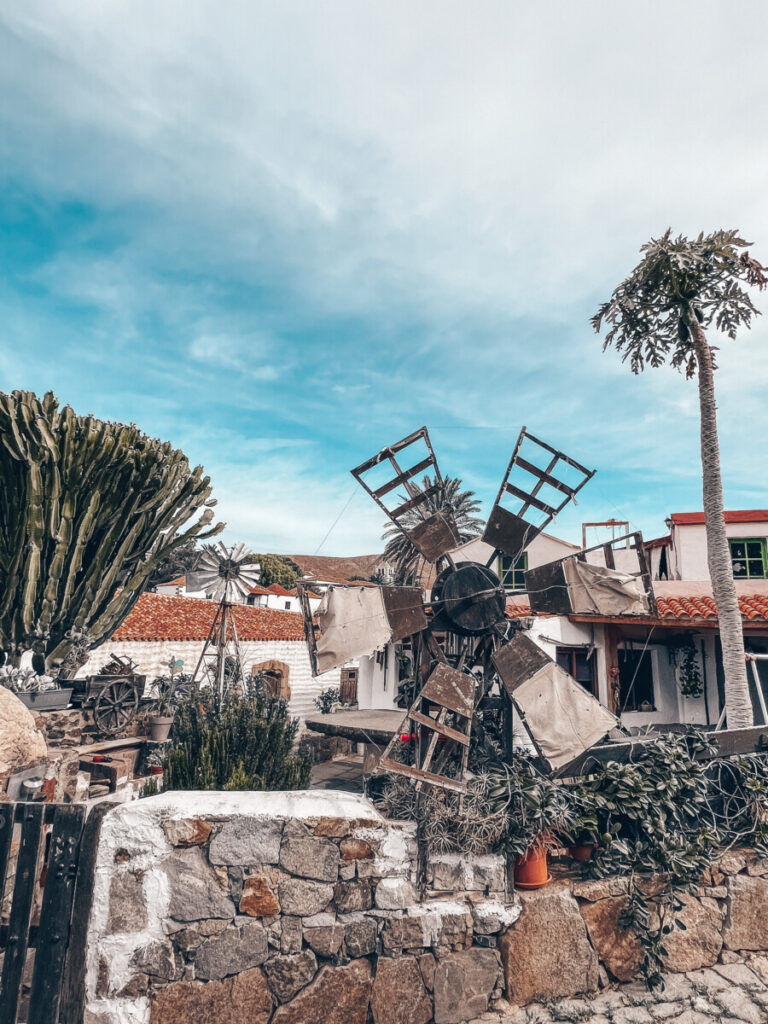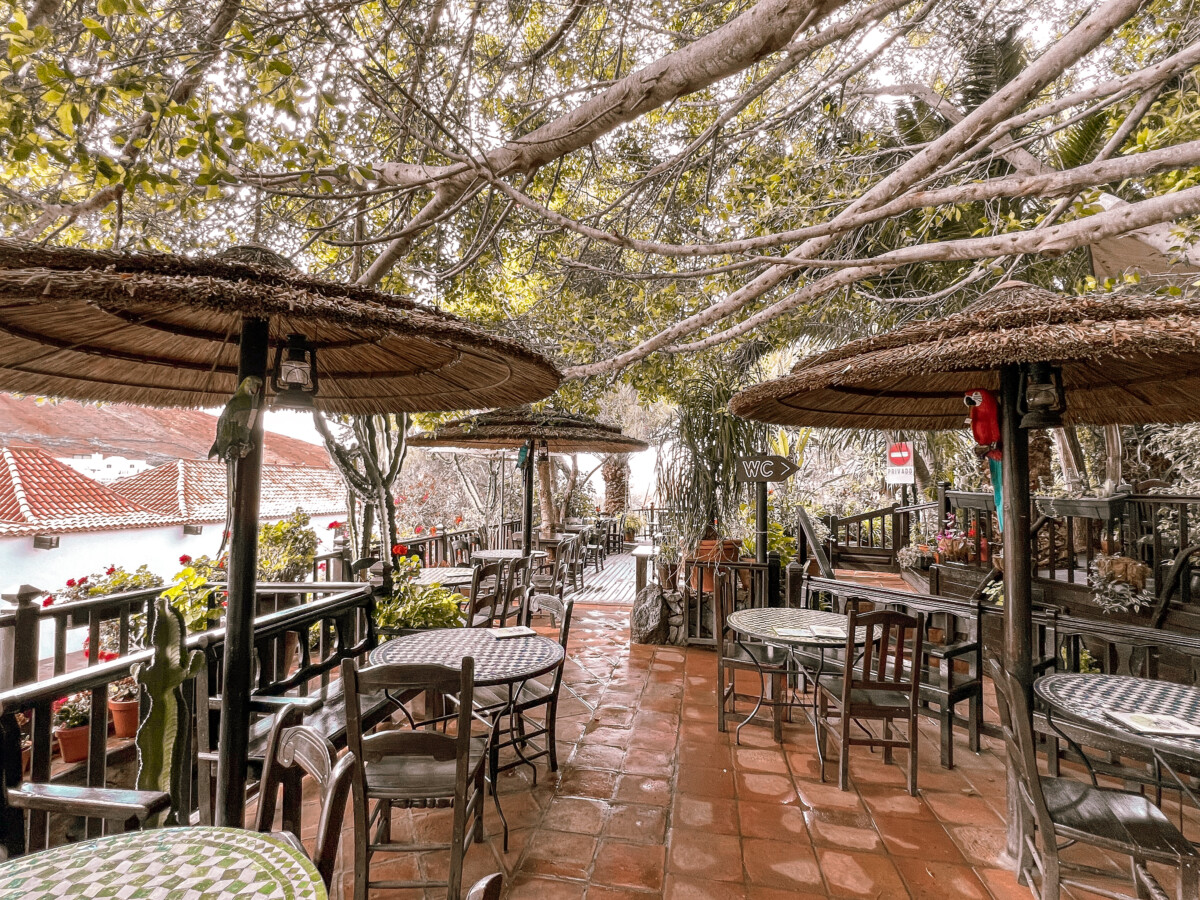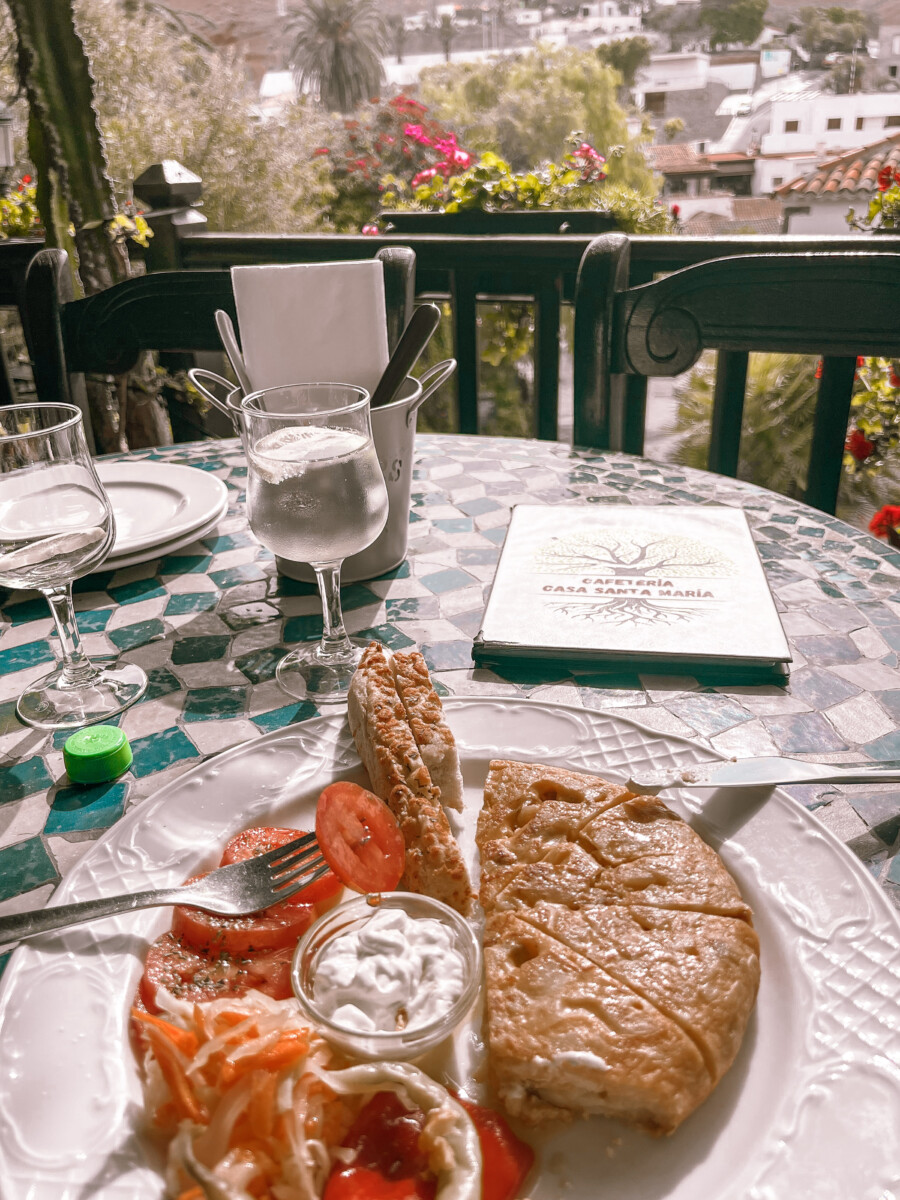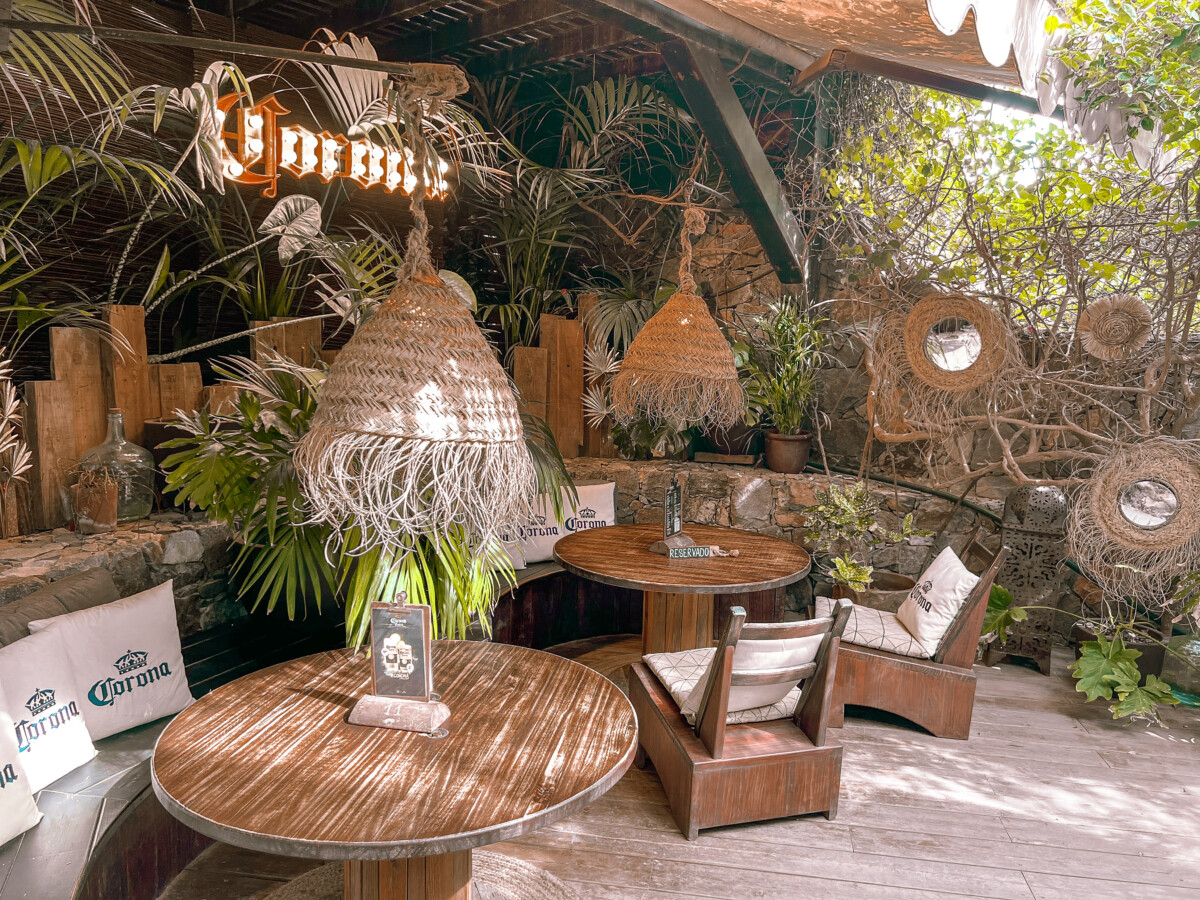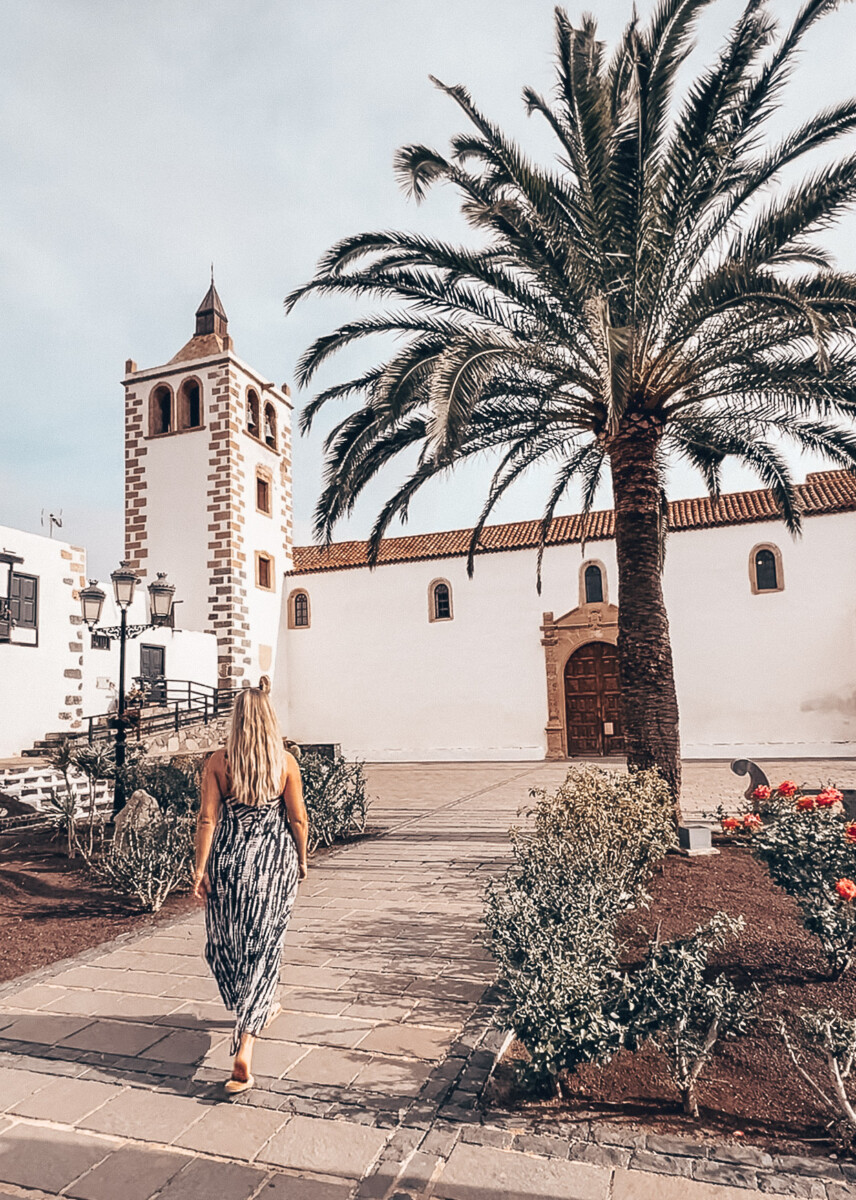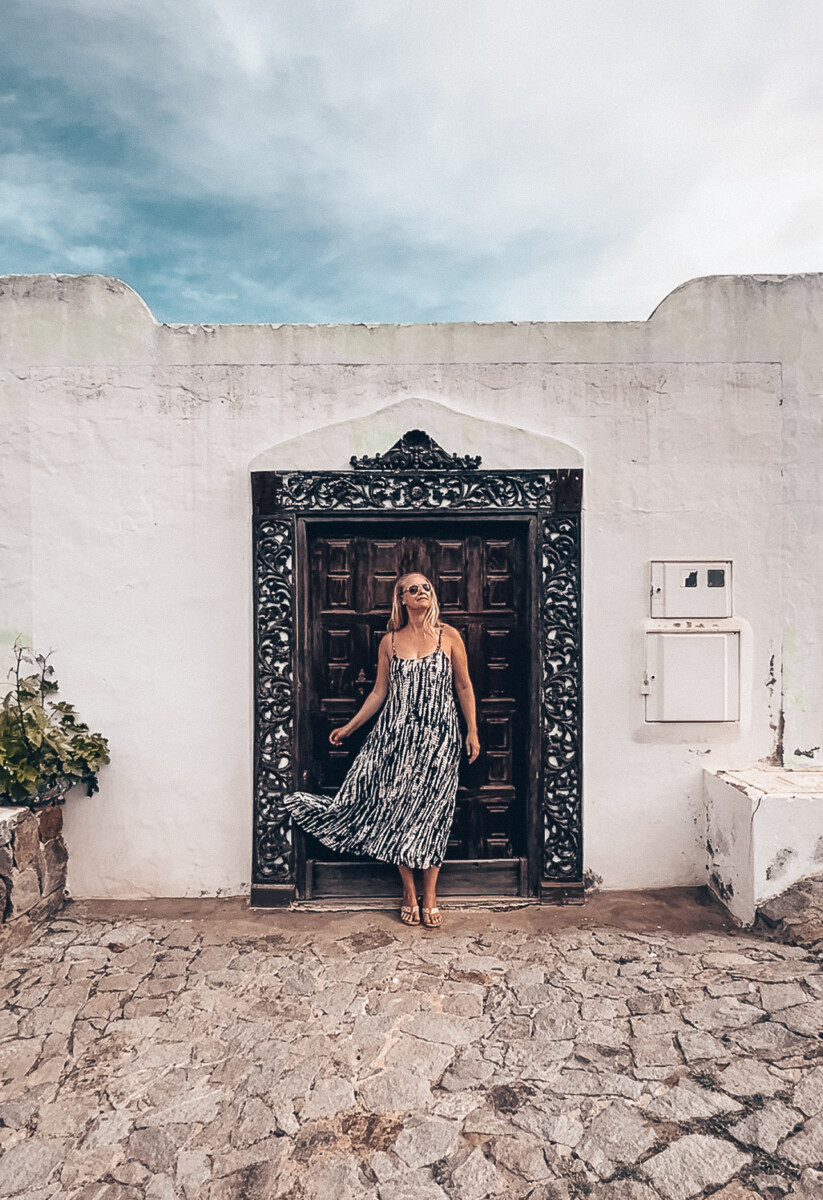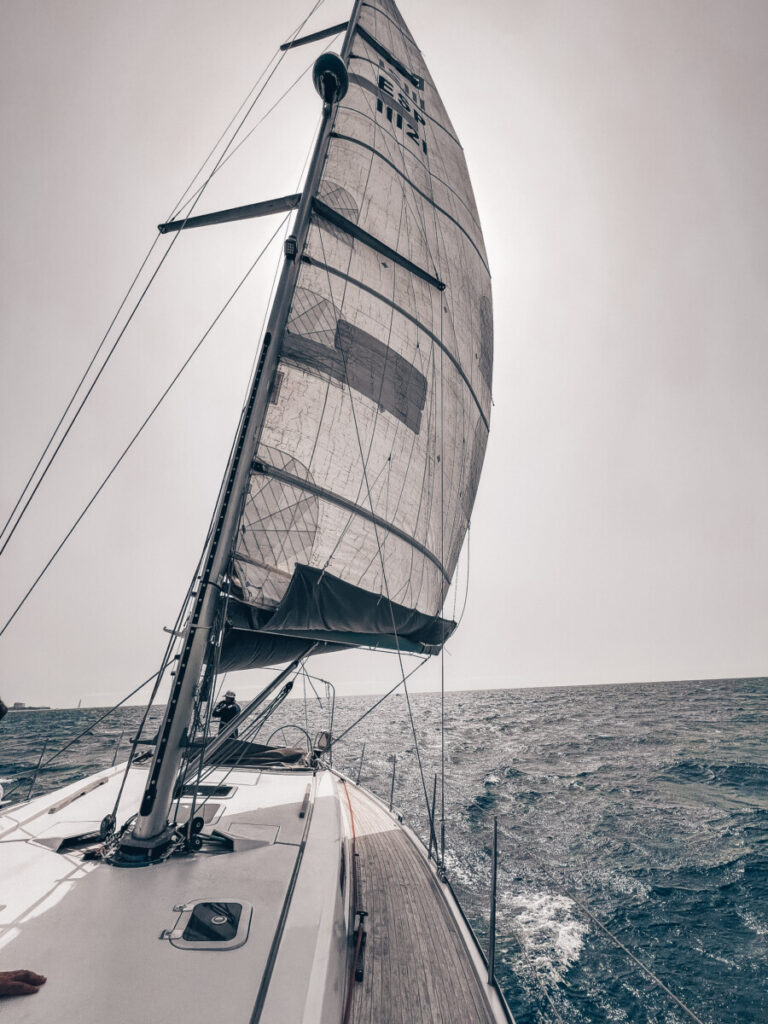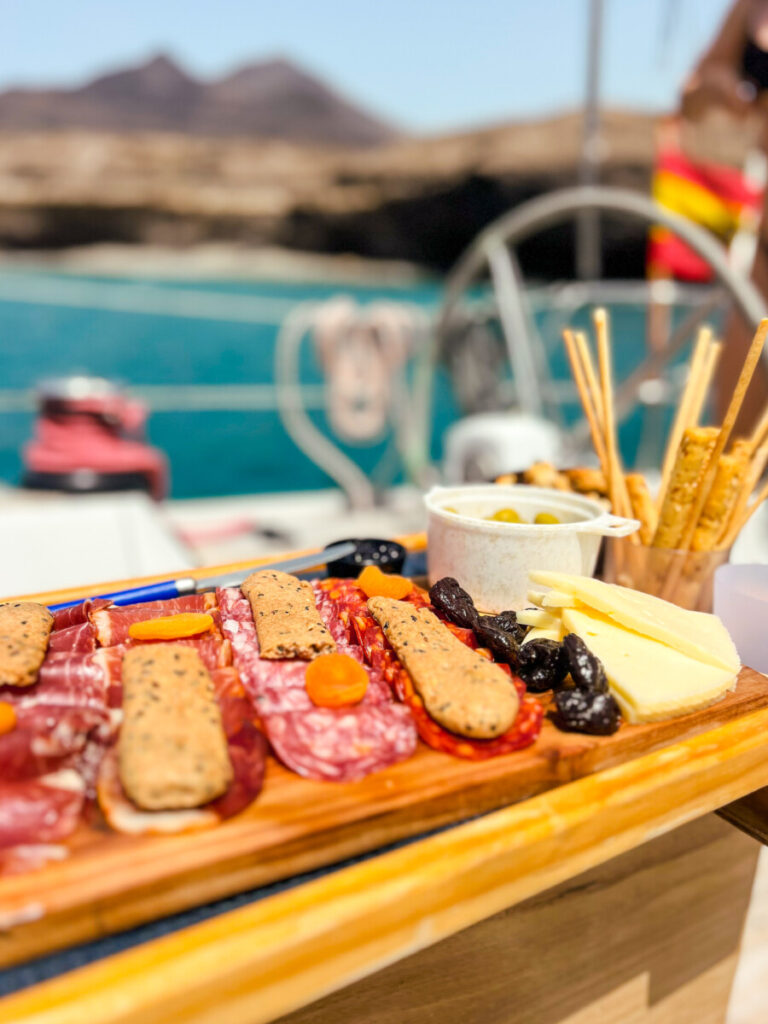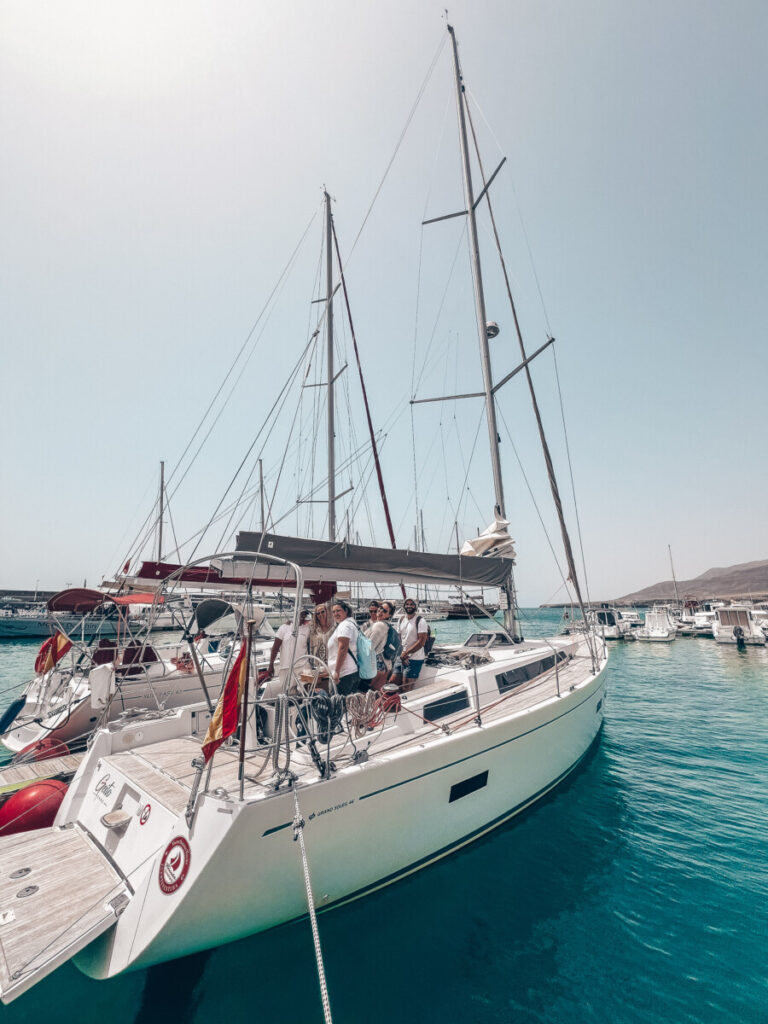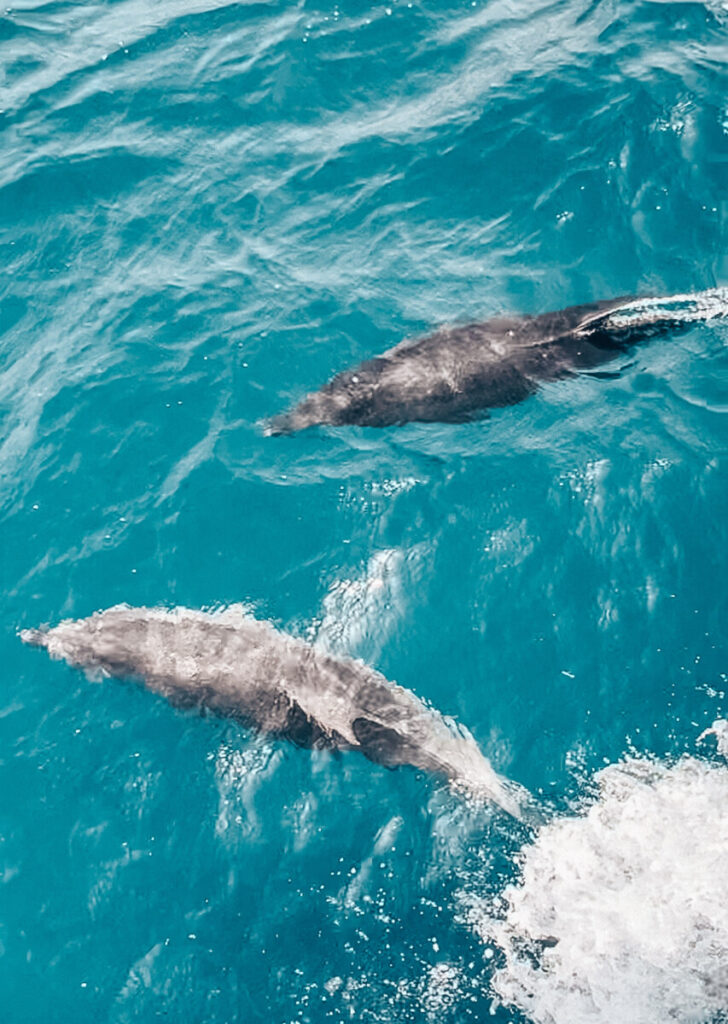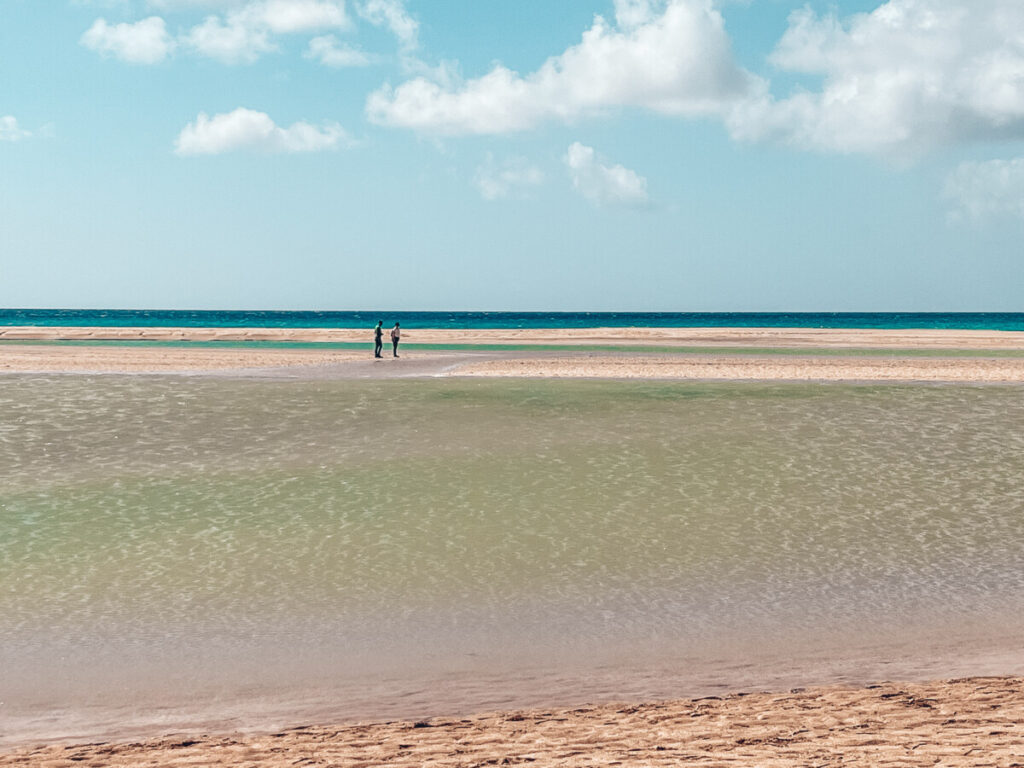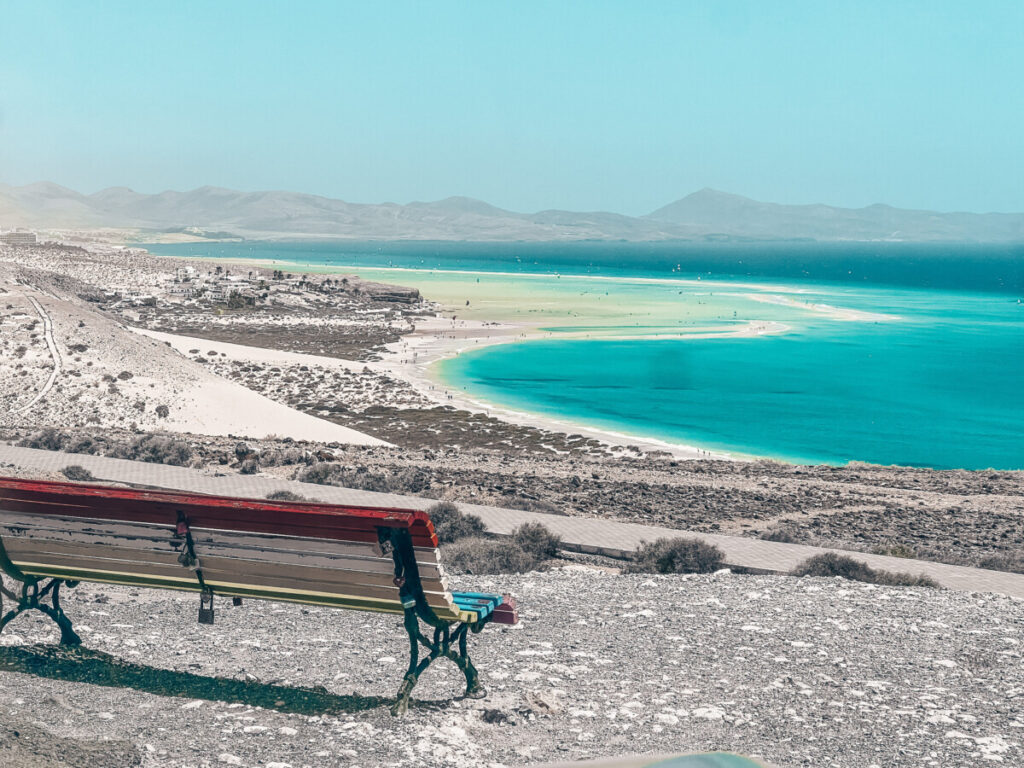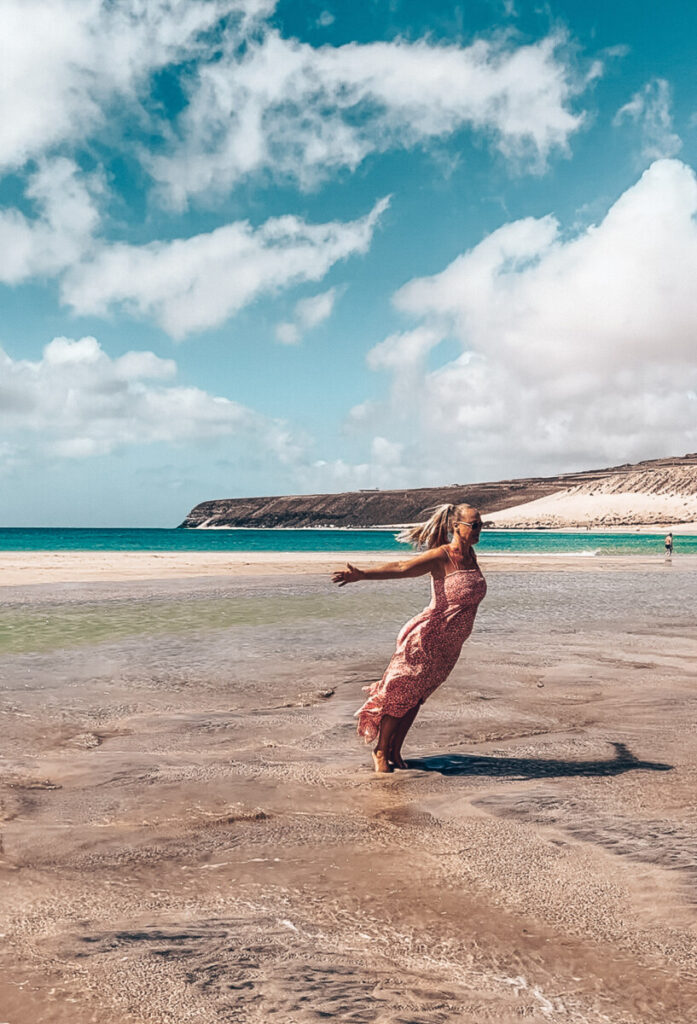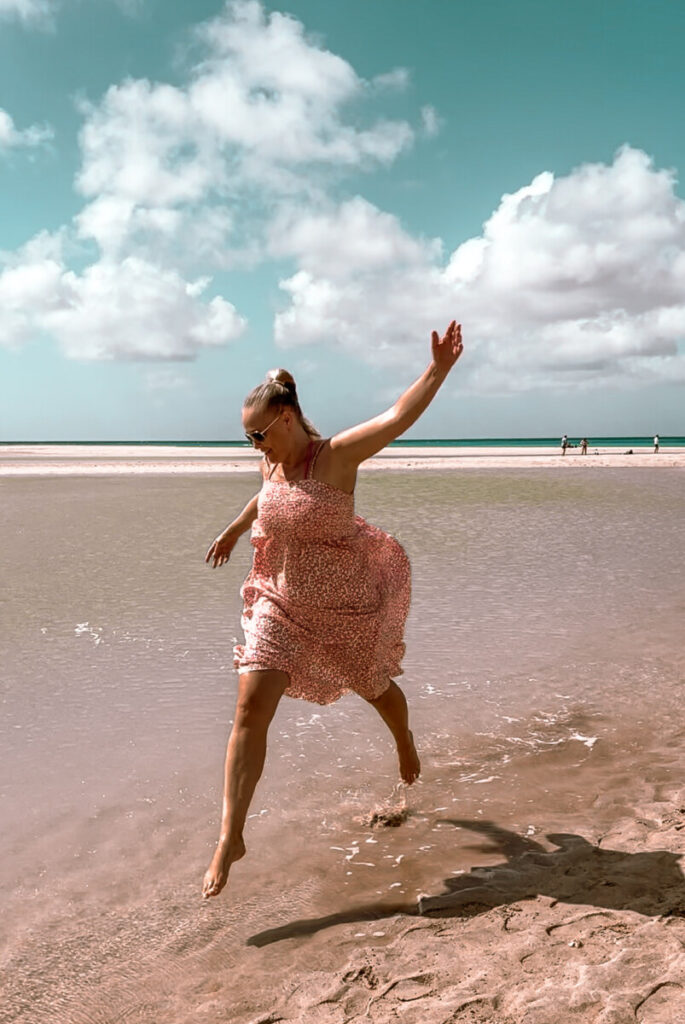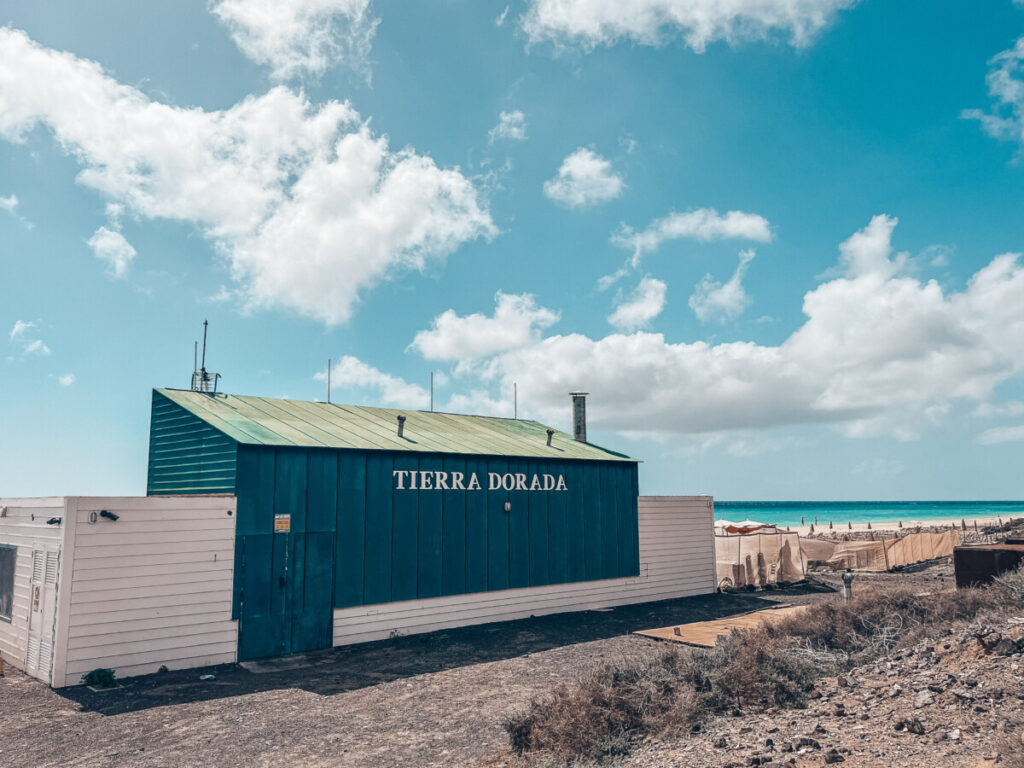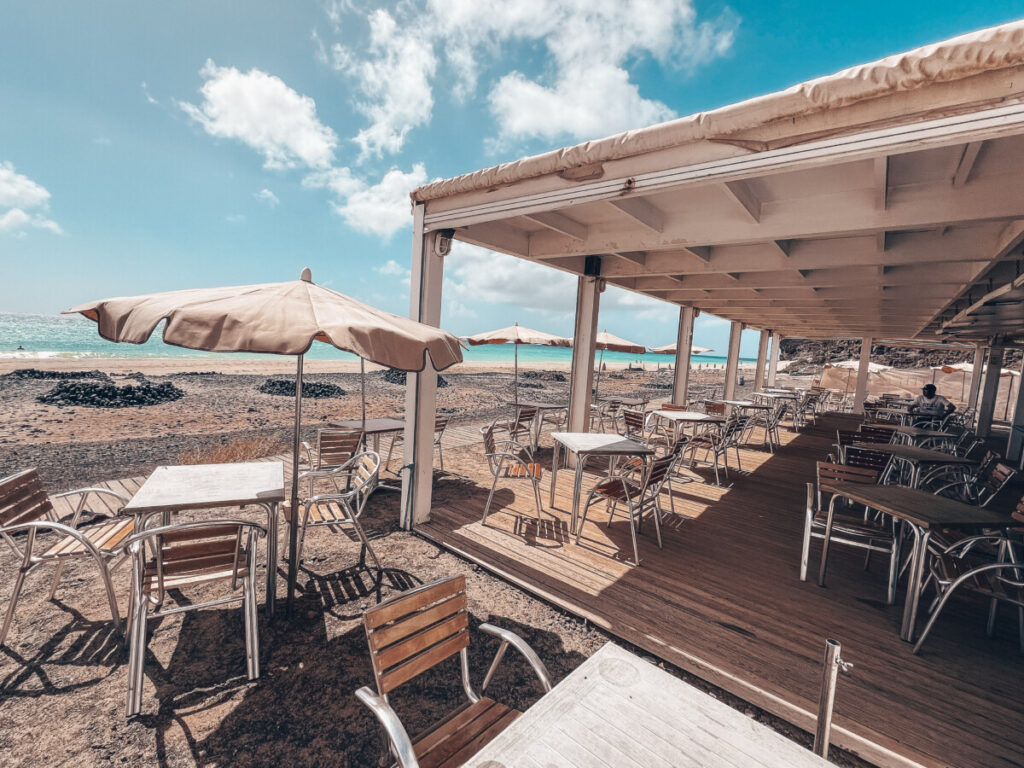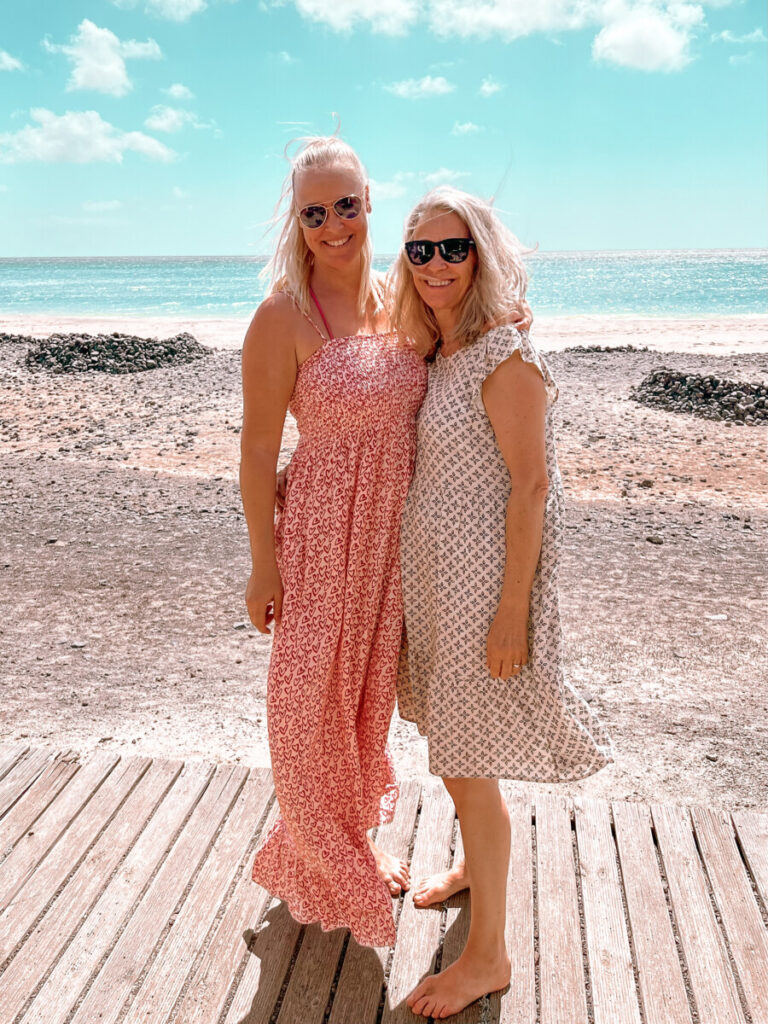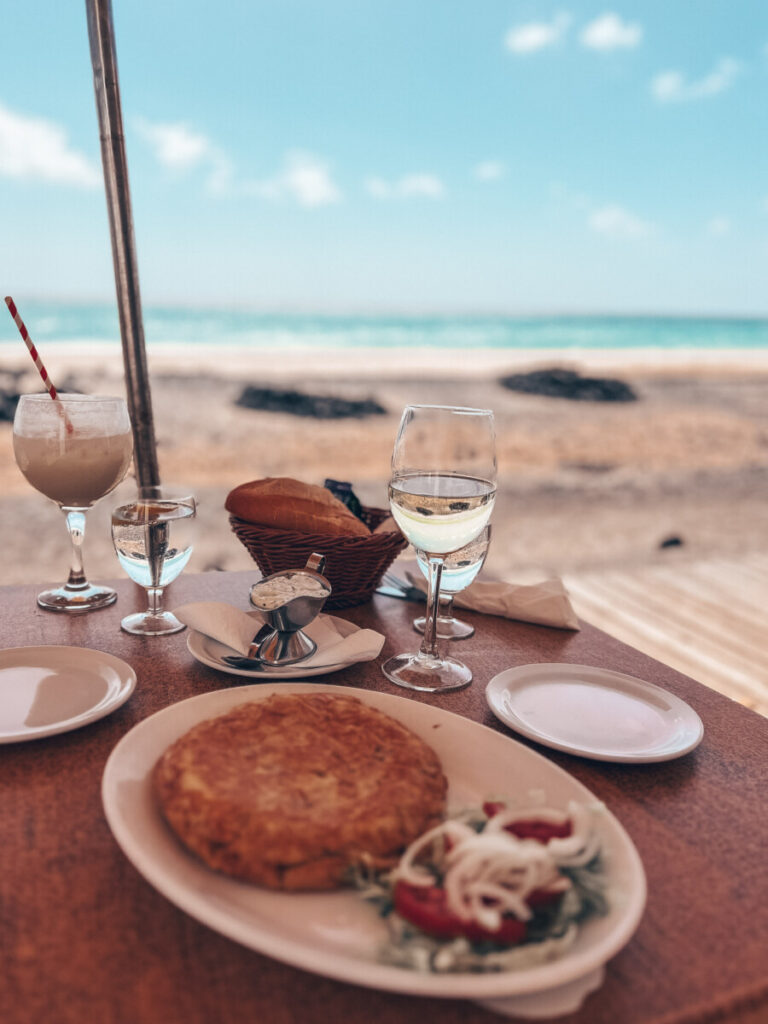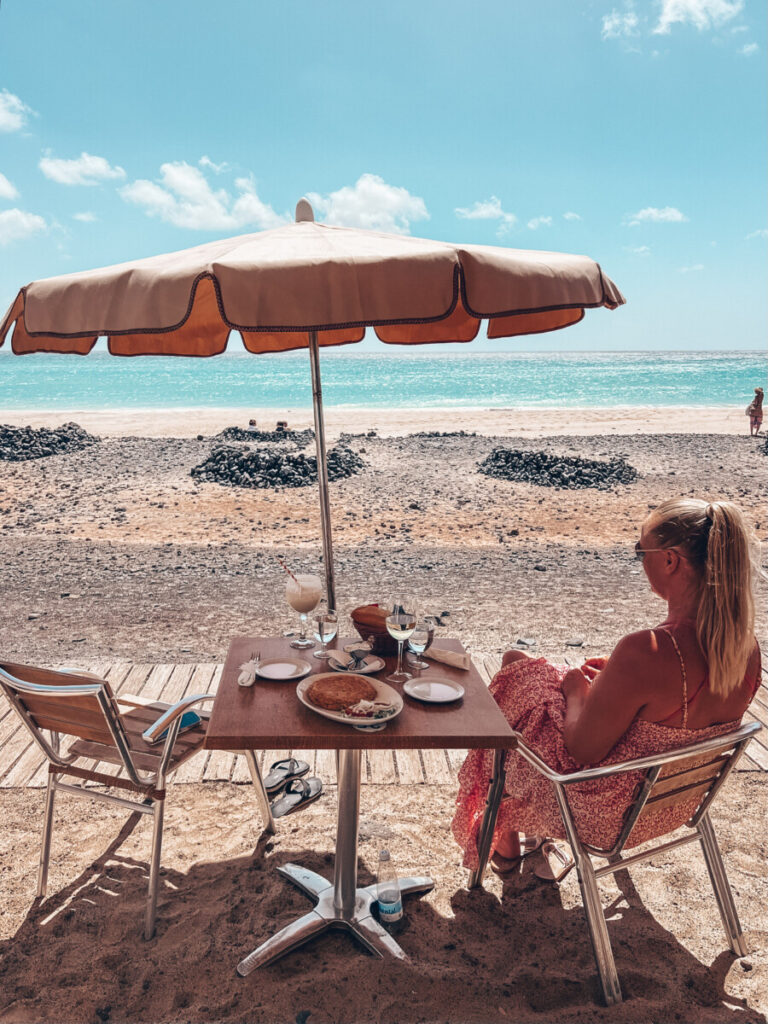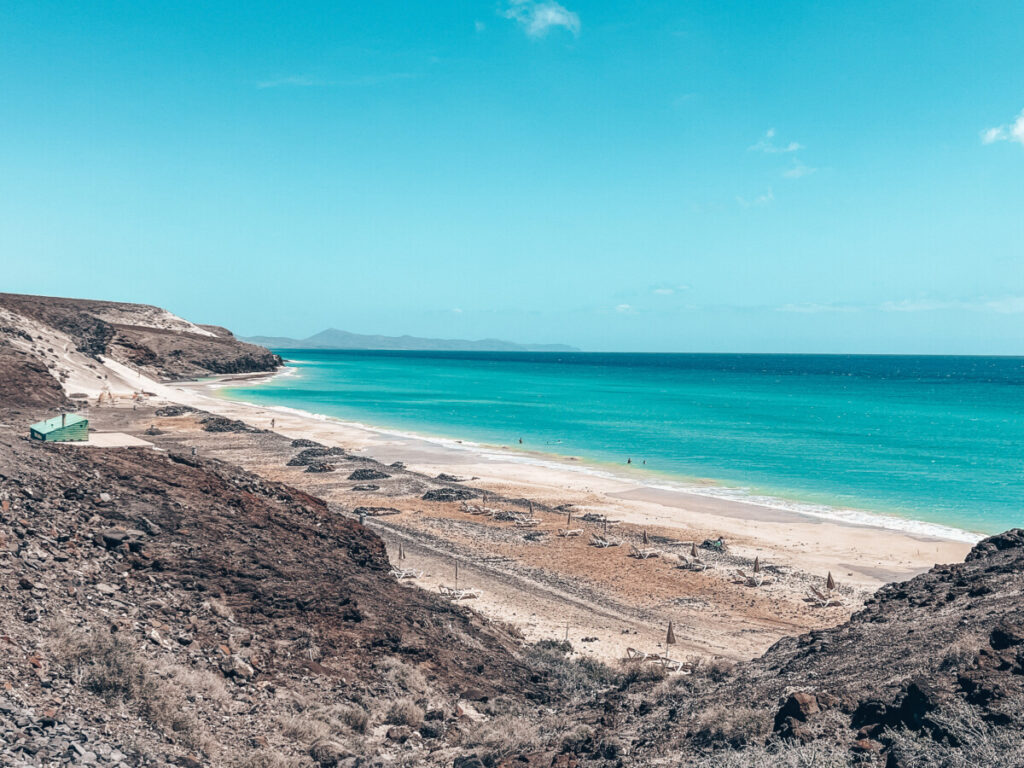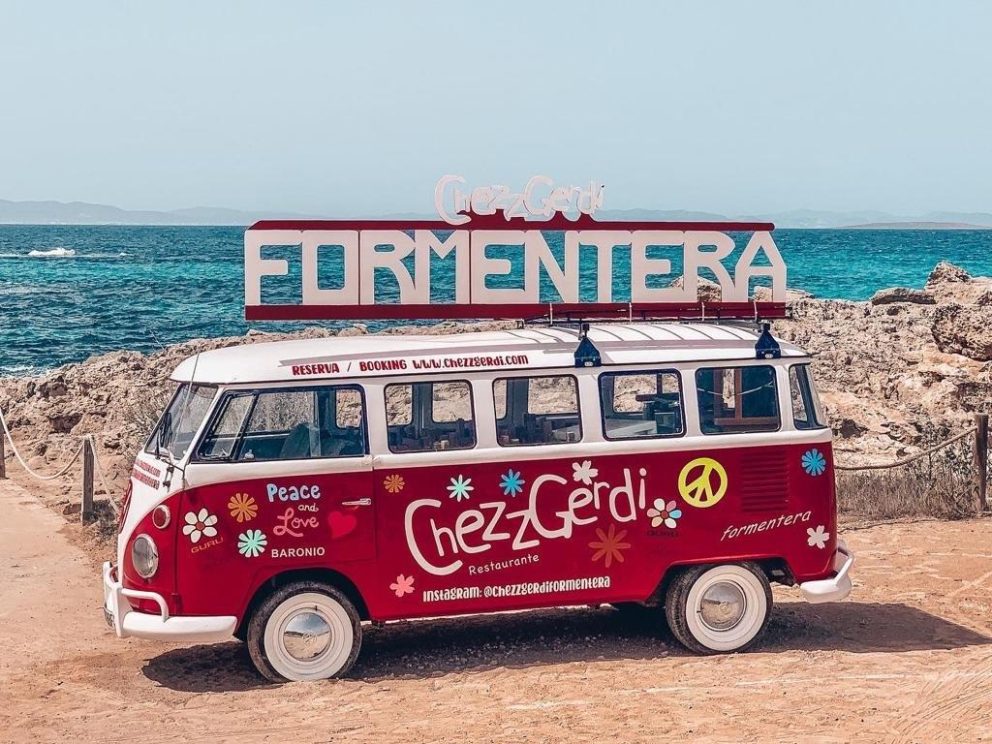Fuerteventura travel tips: The most beautiful places, activities & highlights of the island
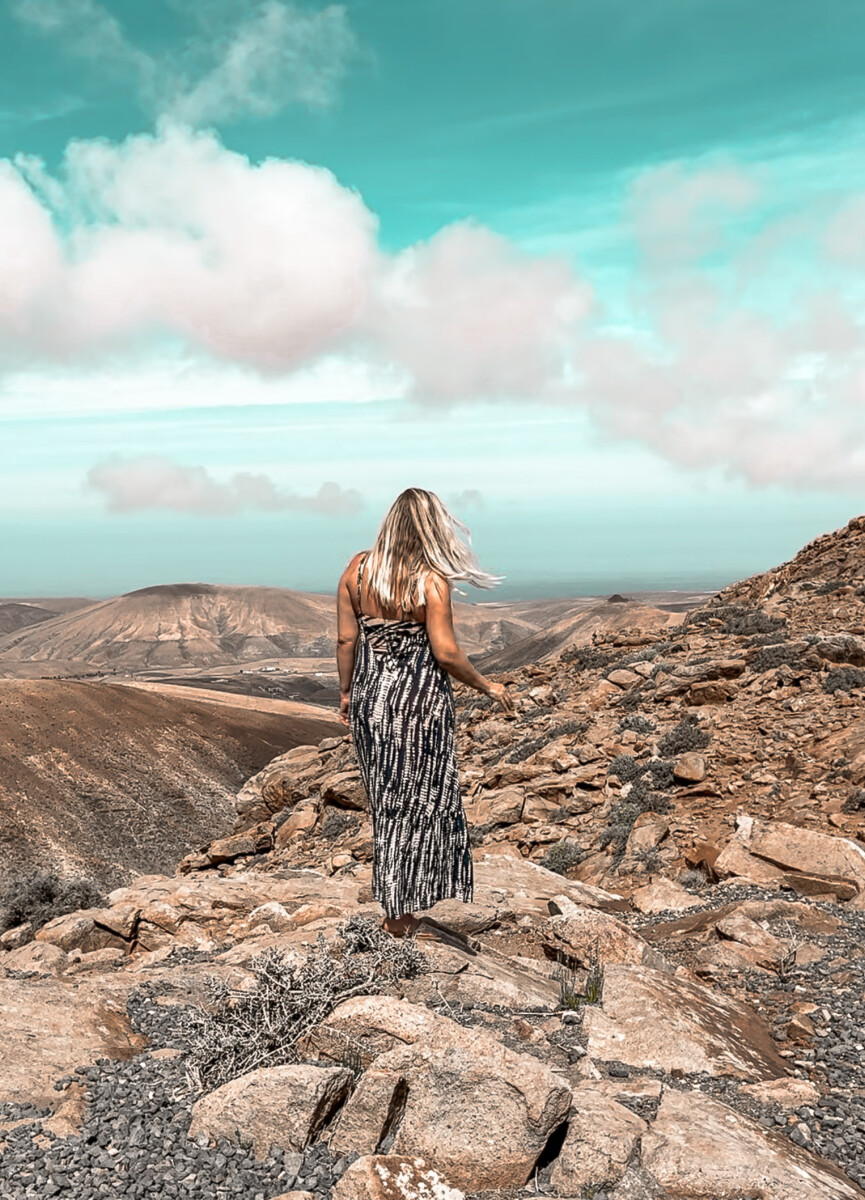
The Canary Islands are an ideal winter and spring destination if you want to avoid long-haul travel but still enjoy temperatures above 20°C. So, at the end of March, we soaked up some sun on Fuerteventura. The island may appear arid, but it offers surprising diversity: from light brown, reddish, or nearly black lunar mountains to white dunes and sandy beaches with turquoise waters. All this is on offer here.
Fuerteventura is also known as “the island of strong winds”, which is why it is particularly popular for windsurfing and kitesurfing. Otherwise, the beautiful beaches are perfect for a beach vacation and various activities and tours.
Las Playitas — a cozy, charming fishing village
We opted for a beautiful, small boho-style Airbnb* in the small fishing village of Las Playitas in the east of Fuerteventura. The village has an old town center, just a handful of restaurants and two small supermarkets. At the other end of the beach, there is a sports resort* and another hotel complex built in the typical Fuerteventura style, which blend in beautifully with the rustic ambience of Las Playitas. At weekends and in the evenings, the locals often gather at the harbor, have picnics and the children play soccer or go swimming. A pleasant sense of relaxation washes over the small village, instantly infectious.
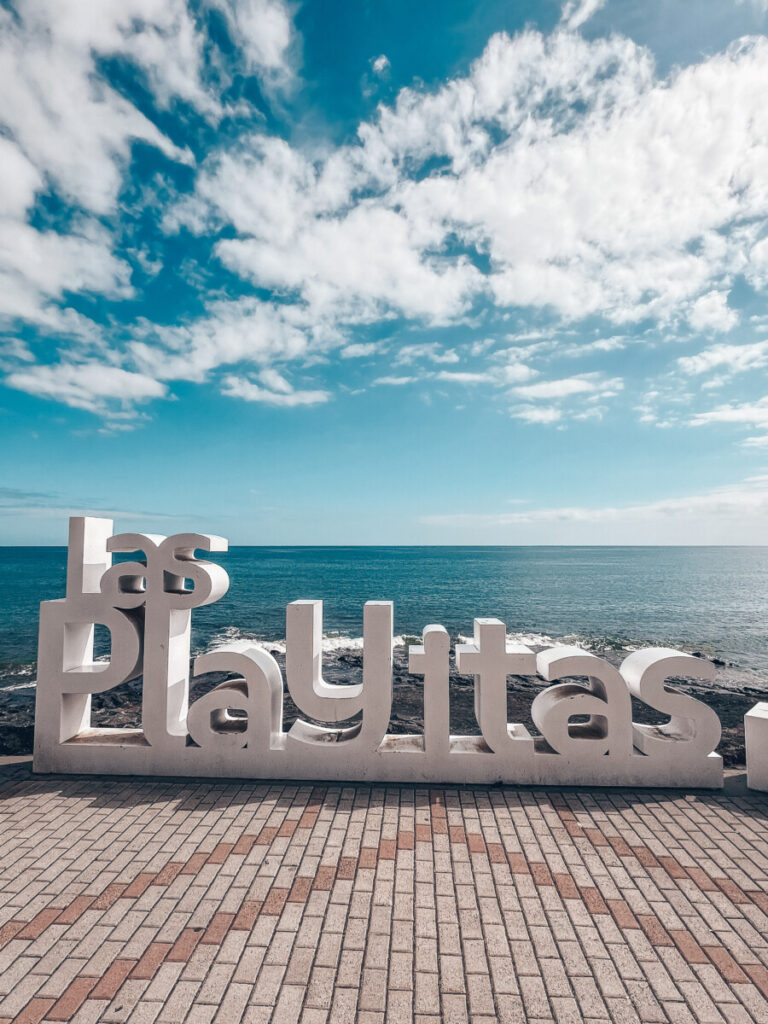
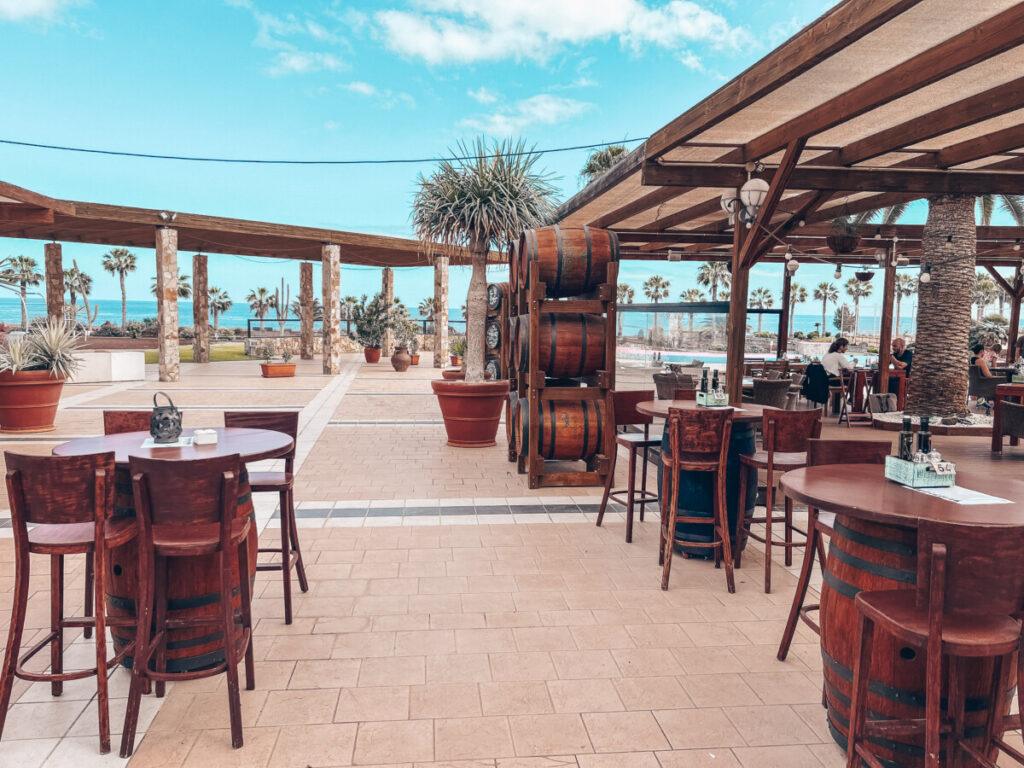
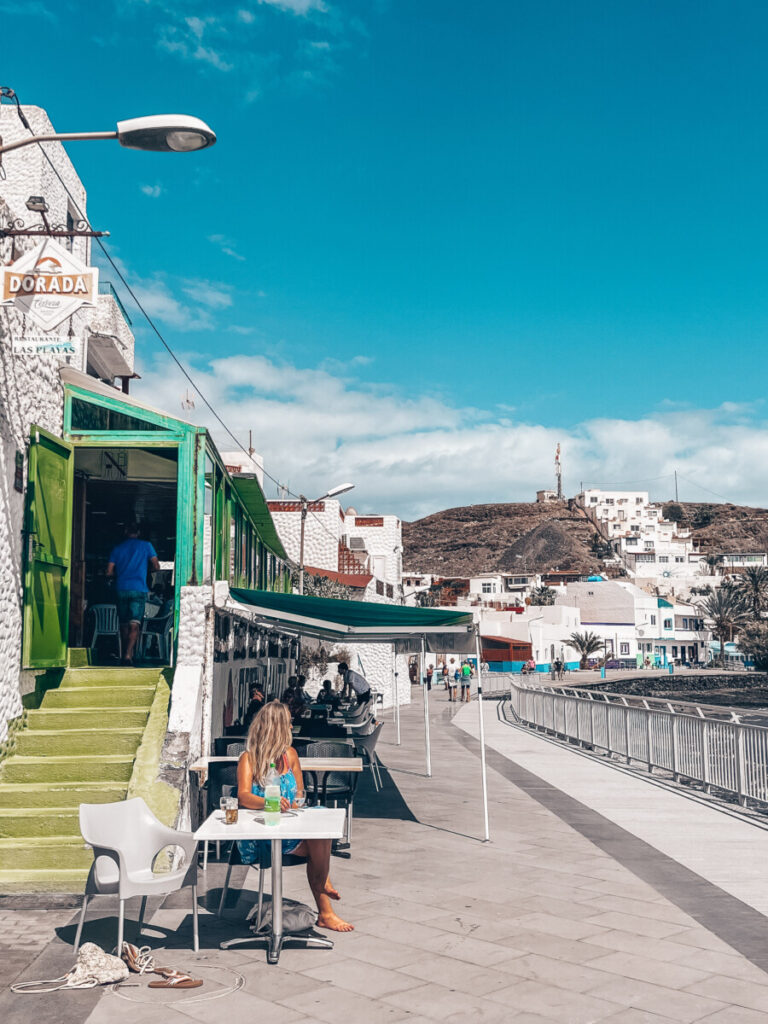
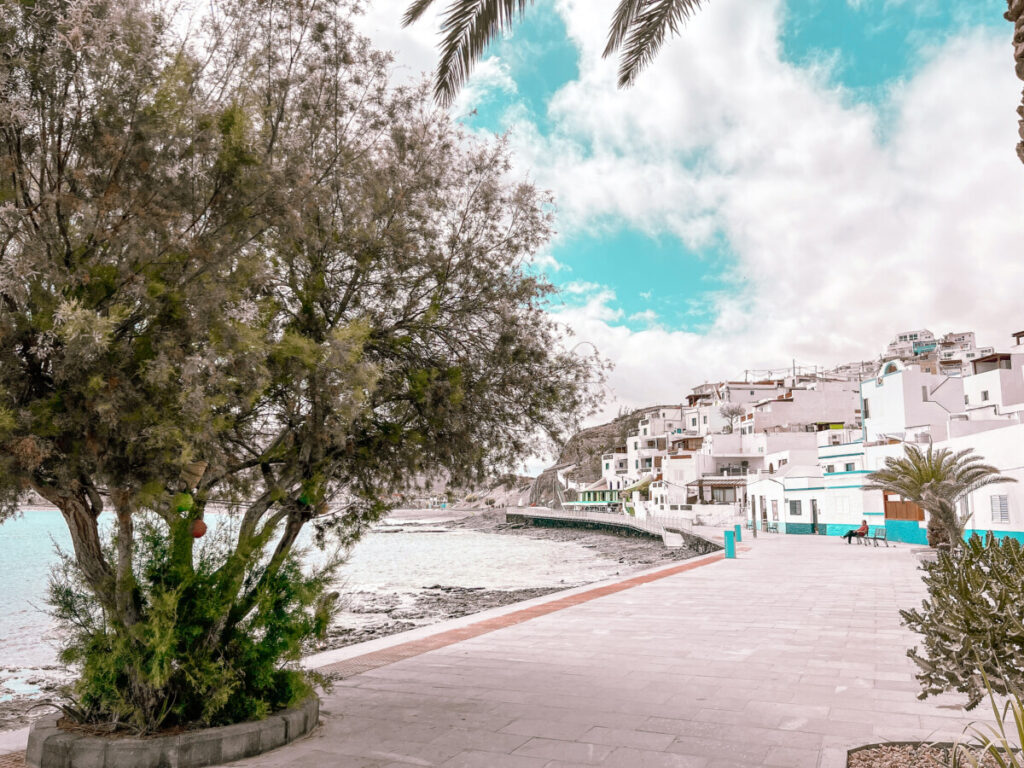
Casa de Meli – a little oasis for boho lovers
Casa de Meli is just a few minutes’ walk from the beach and harbor, on the village edge. The lovingly designed holiday home features a large garden and offers everything we needed: 2 bedrooms, a well-equipped kitchen, a cozy living room, and a spacious outdoor area with seating, sun loungers, and a hammock. Enjoy fruit and fresh herbs from the garden. A real little boho idyll.
Corralejo and the famous dunes of Fuerteventura
There are many great places to explore in Fuerteventura. To start our week, we decided to explore the north of the island first. Of course, our program included visiting the famous dunes of Corralejo and taking some nice photos. The dune landscape is truly breathtaking.
We parked in a parking bay at Playa Alzada and walked about 10 minutes further north from there. There we had the dunes all to ourselves, while the dune right next to the parking lot was quite busy.
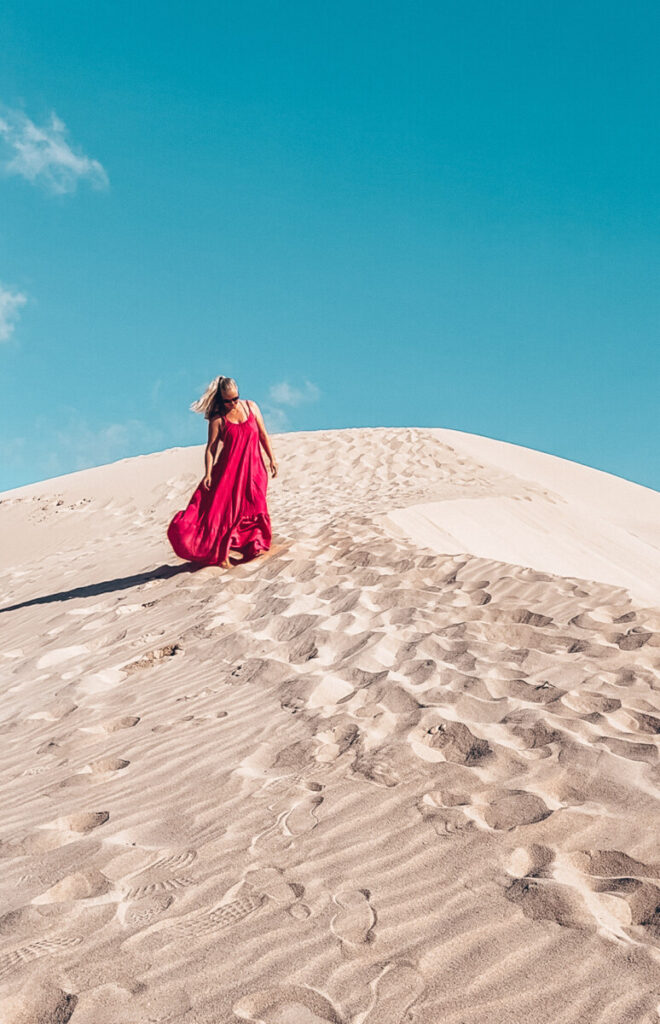
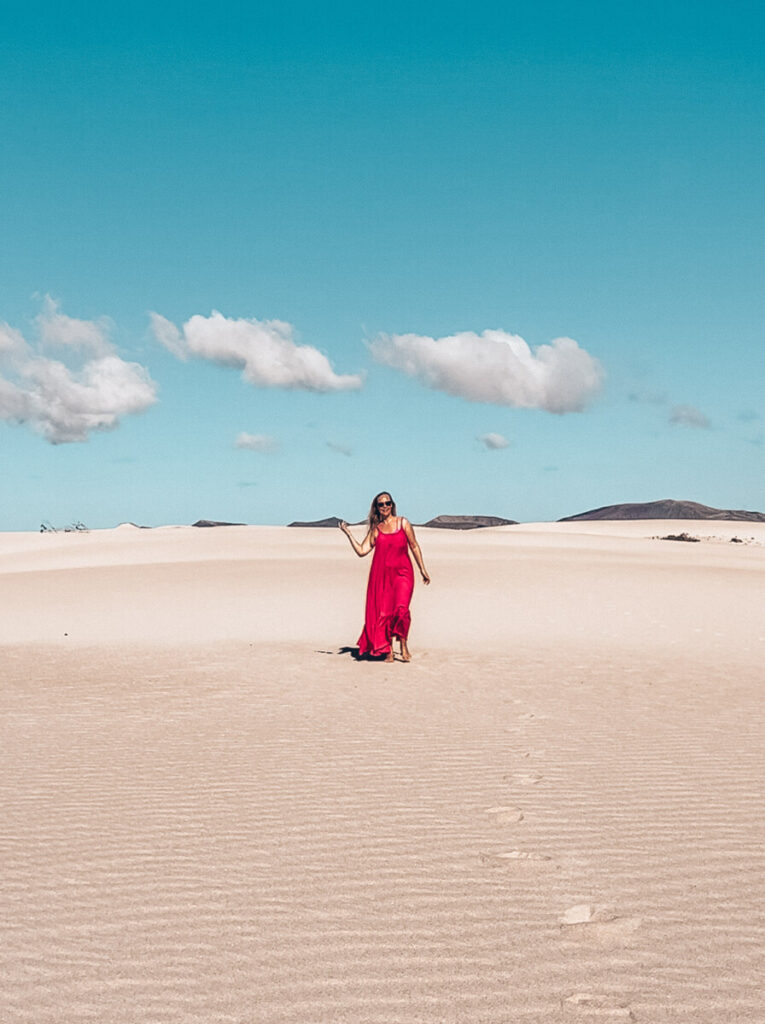
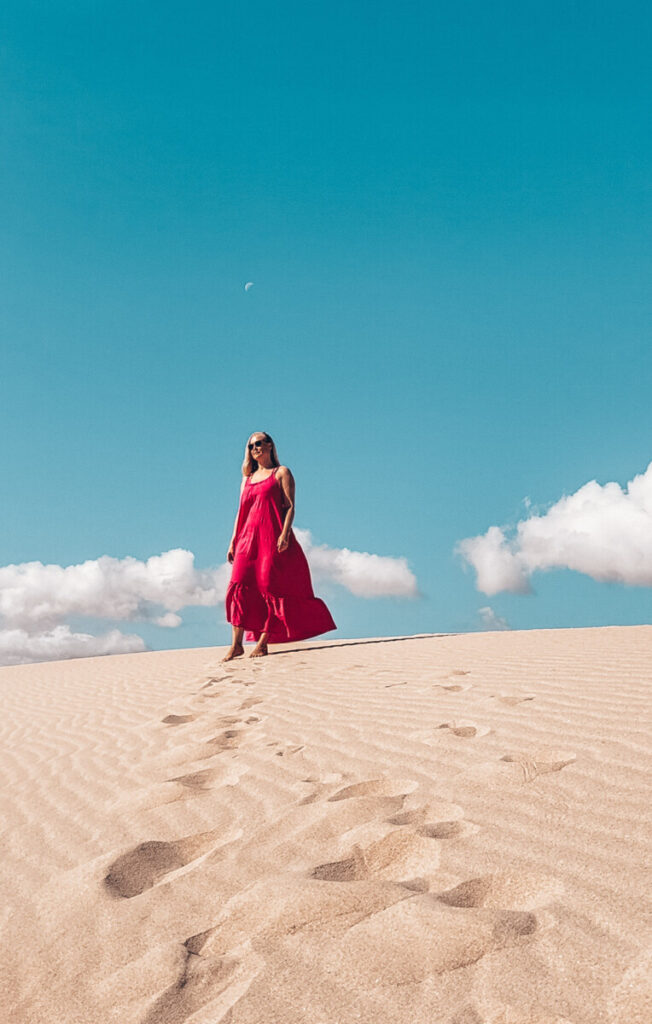
Corralejo: from the stunning dunes, we continued our journey and strolled along the beach and harbor before exploring the busy pedestrian zone with its many shops. Corralejo comes across as colorful, lively, and a little windswept – a blend of surf style, beach bars, and Spanish flair, complemented by a wealth of tourist attractions and commerce. Between restaurants, small boutiques, and sunset drinks, there’s little dull moment here. If you like, you can even take a ferry to Lobos or go straight to Lanzarote. But to be honest, Corralejo felt a bit too touristy and commercial for me, but as a boho style lover I really liked the Waikiki Beach Club. Further visits to Corralejo weren’t on the agenda during our Fuerteventura stay. In the mix of local vibes and tourist infrastructure, you still feel the island’s diversity, and who knows, perhaps our path will lead us back there one day.
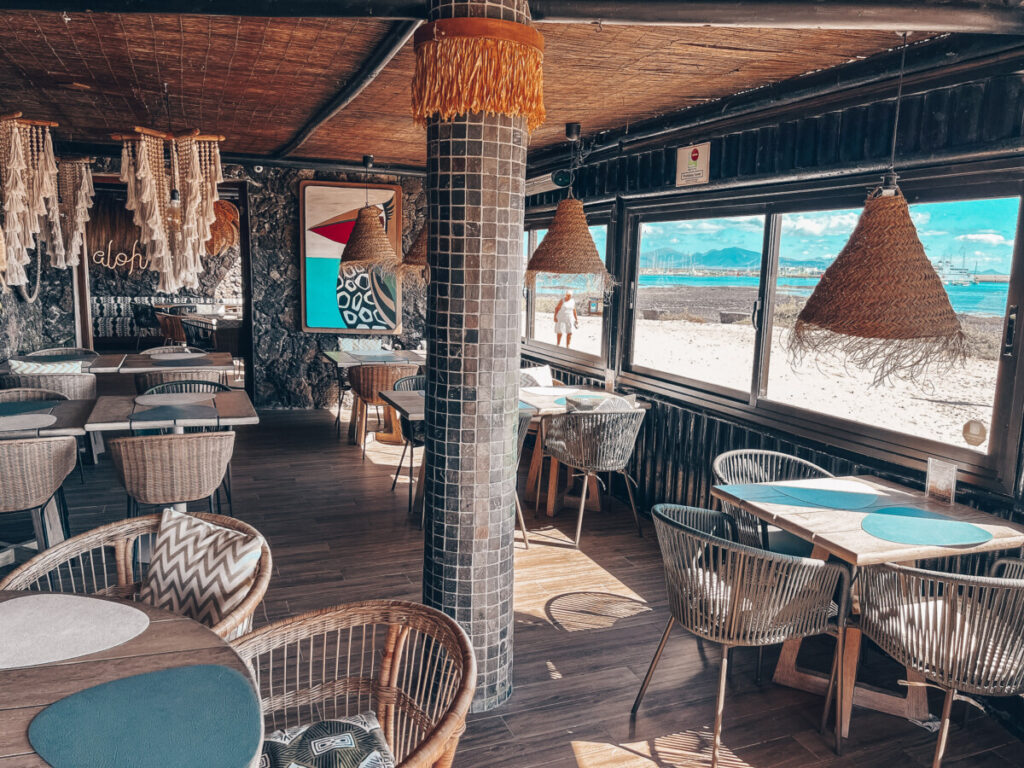
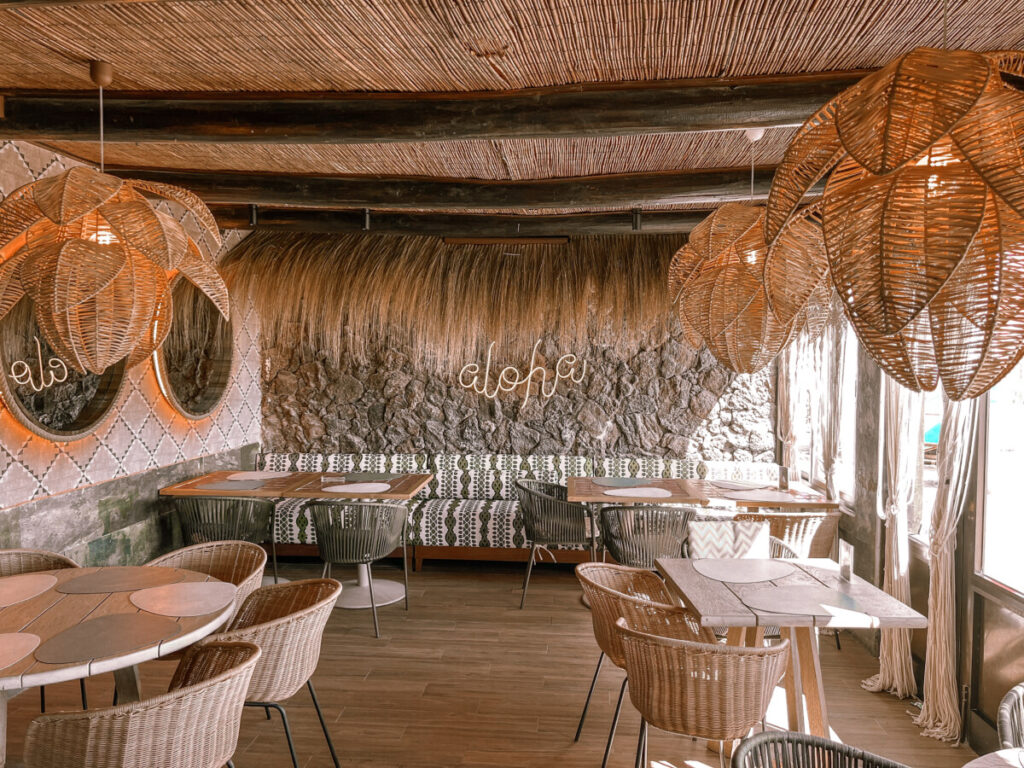
El Cortillo
Since we were already in the north of the island, we kept driving to El Cortillo for lunch. The small village sits on the northwest coast of Fuerteventura and delights with unspoiled nature and wild charm. Compared to Corralejo, it feels quiet, relaxed, and a little boho. Between whitewashed houses, small tapas bars, and turquoise-blue bays, time easily slips away. Perfect for anyone seeking sea, sun, and real island vibes, away from the hustle and bustle. Restaurant tip: La Vaca Azul.
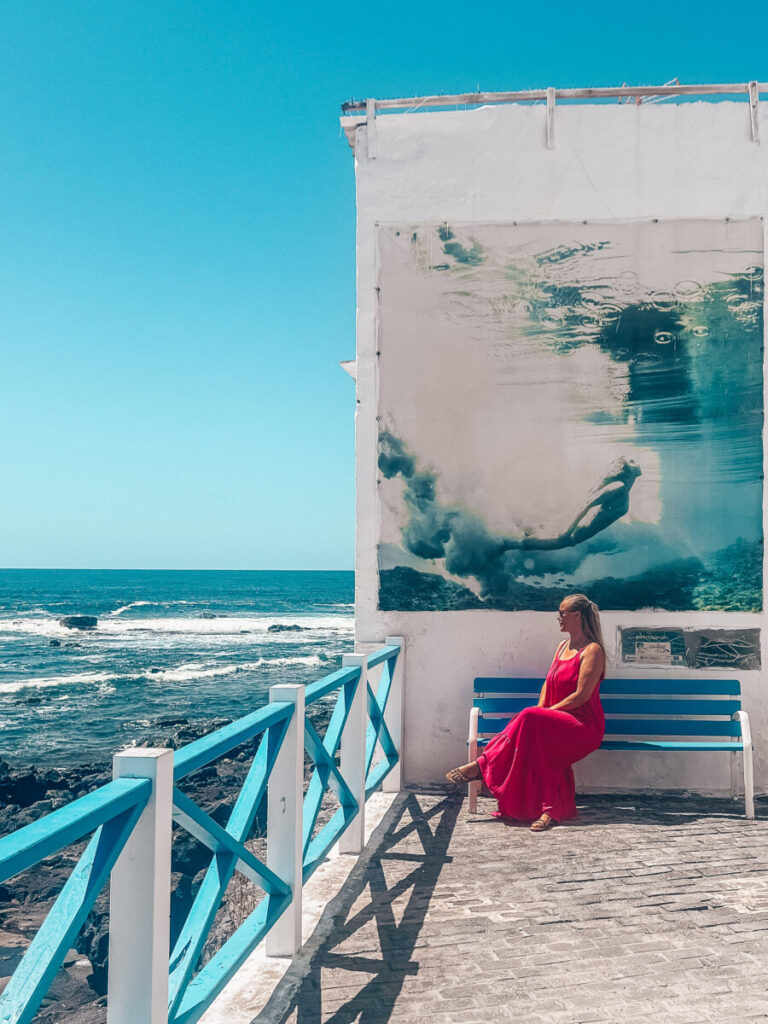
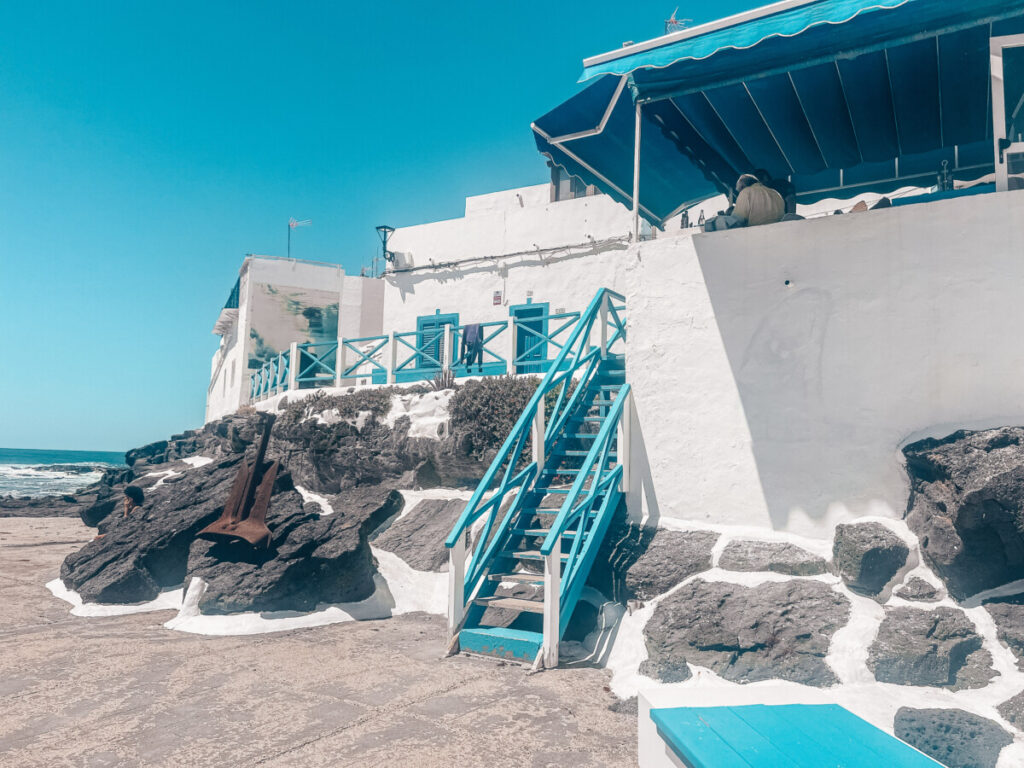
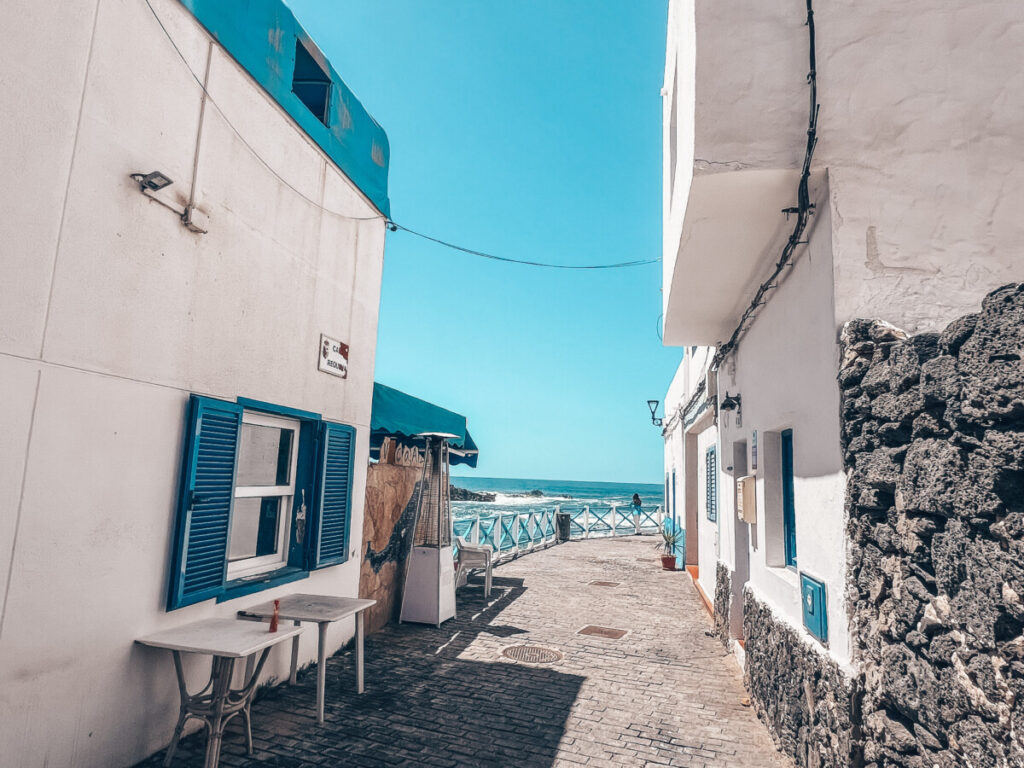
Homemade goat’s cheese from A to Z
The next day, I had lined up a truly memorable activity that would surely become one of the standout moments of our trip to Fuerteventura. We started the morning at a charming goat farm with an attached cheese dairy, where we could immerse ourselves in the daily life of the farmers. From milking the goats and tending to the stables to rolling up our sleeves and making our own cheese, we walked through the entire process. Over four hours, we were guided through an incredibly authentic experience that felt refreshingly hands-on and heartfelt.
In the end, we sat in the sun with our homemade cheese, surrounded by happily bleating goats and the smell of fresh herbs, and simply enjoyed the moment. I particularly liked how much love and patience the owners put into their farm and how proud they are of their animals. It was one of those experiences that reminds you how beautiful simple things can be and that cheese that you have made yourself just tastes twice as good. I can highly recommend a visit to La Casa Del Queso* to anyone.
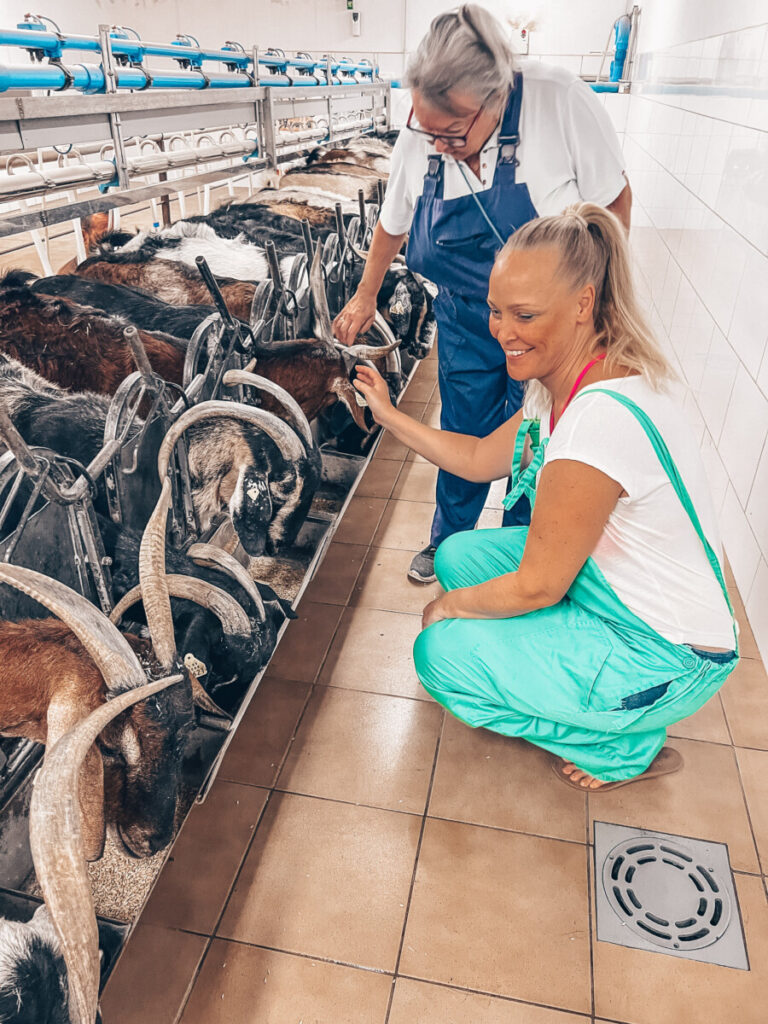
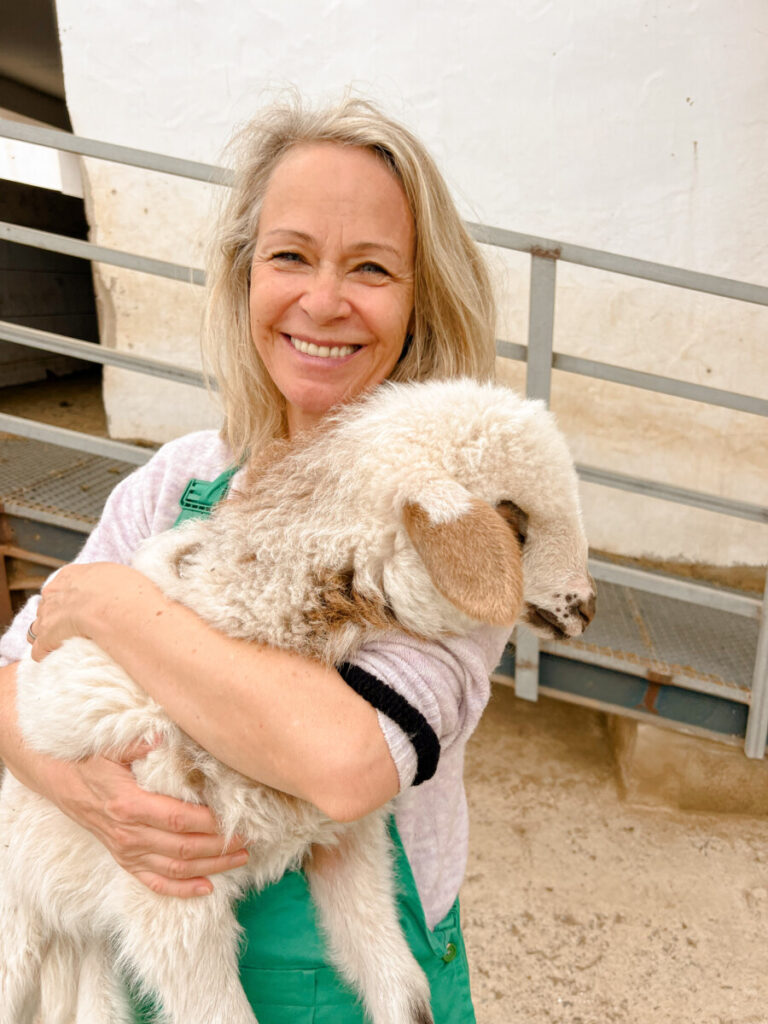
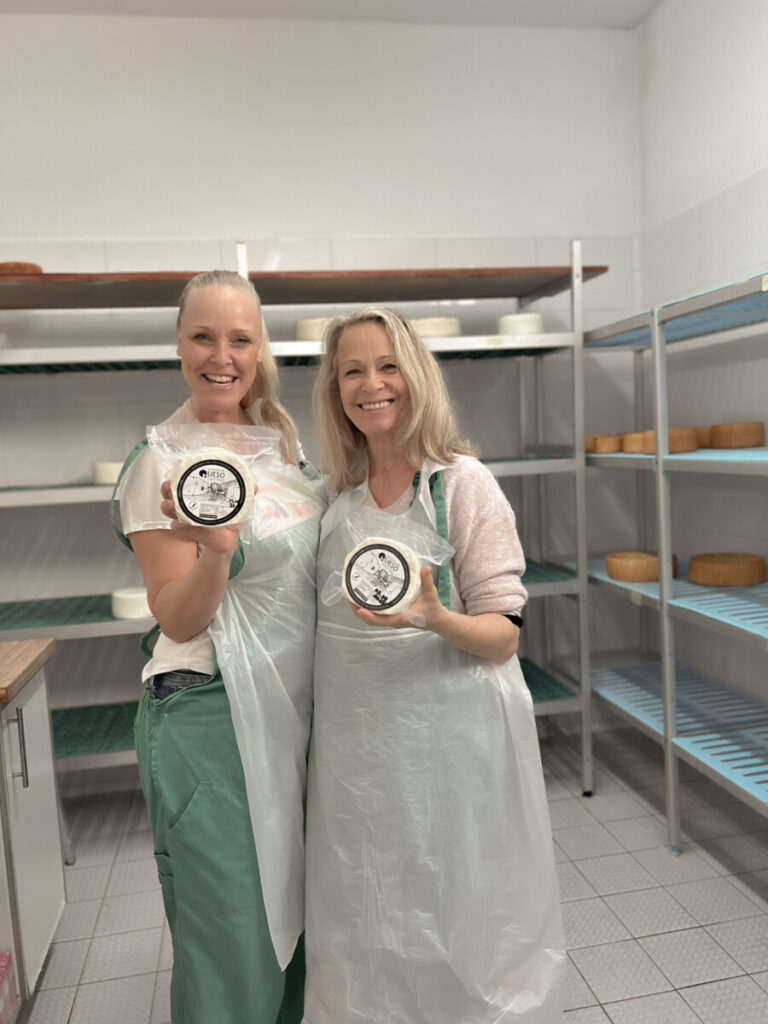
Palmita Pepe y Antonia
Enjoying a good lunch with chilled white wine, local specialties and sea views is probably one of my favourite things to do on any vacation. So after a wonderful morning at the cheese dairy, we headed towards Costa Calma. South of the popular vacation resort is the cute little beach restaurant Palmita Pepe y Antonia, beautifully situated on a small bay, right on the beach with an incredibly beautiful view of the turquoise blue sea. Not only the view, but also the food, the wine and the overall atmosphere were just right for us here, making it a clear recommendation for a visit to Fuerteventura.
If you’re up for a bit of walking and more exploring after your meal, you can head to another fantastic beach on foot. From the restaurant, simply look out at the water and take the path to the right, heading south.
Playa de Sotavento and the palmtree beach bar
A lovely walk along the beach (you sometimes have to scramble over a few rocks – not too difficult, but you should be reasonably steady on your feet) leads to a stunning, wide sandy beach: Playa de Sotavento. This 5 km stretch is not only popular with wind- and kitesurfers.
We loved the beach bar belonging to René Egli’s kitesurfing station, right in front of the Meliá Hotel. It’s wonderfully laid-back there, and the tall palms give you pure Caribbean vibes!
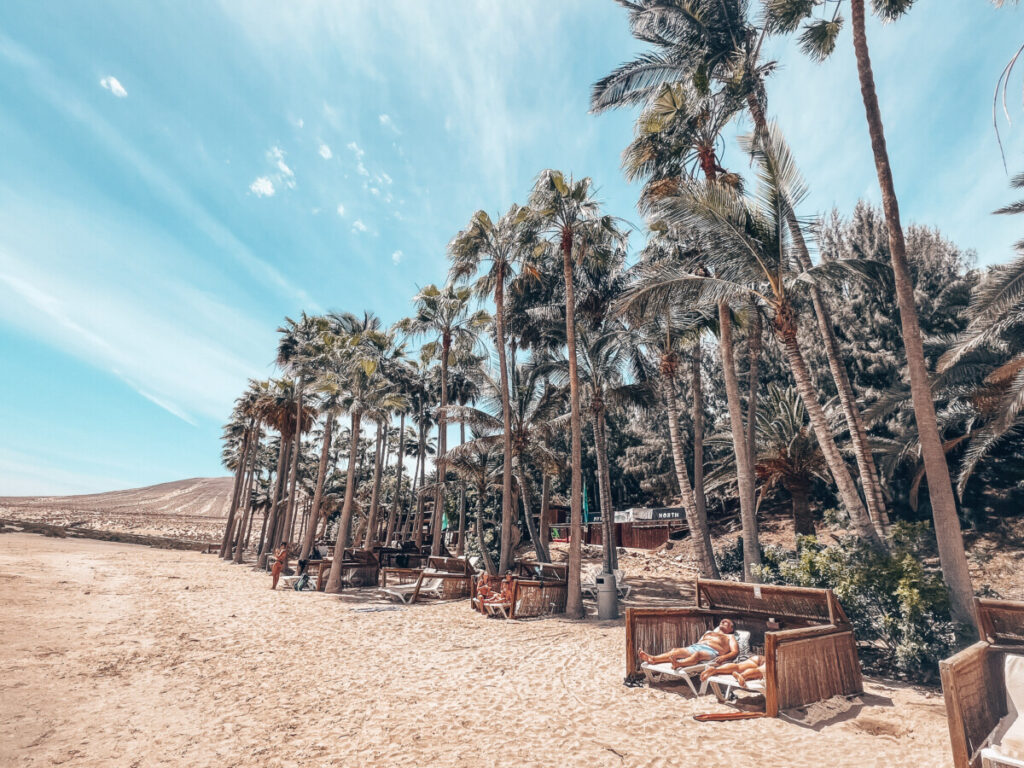
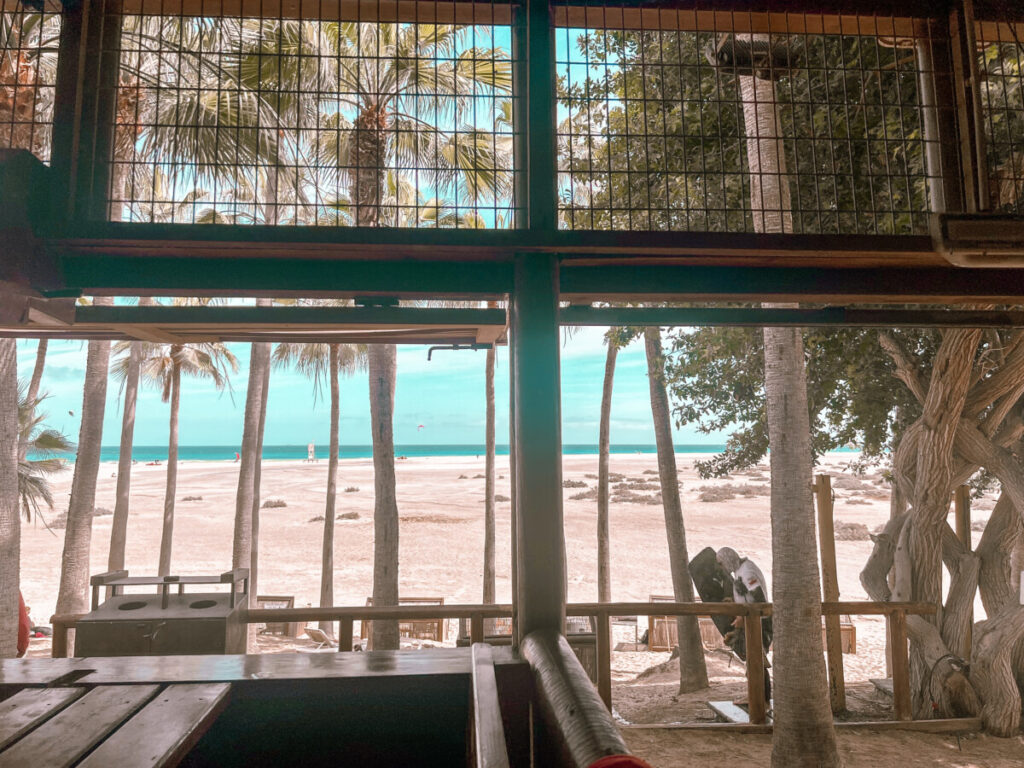
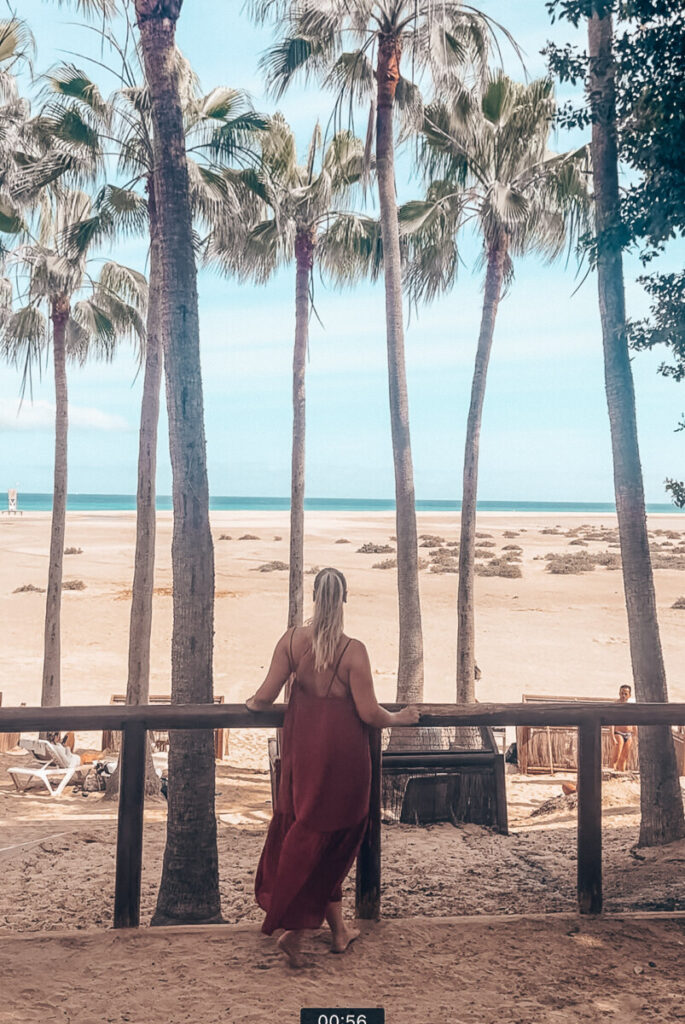
Playa de Cofete – My tip for untouched nature
Some beaches are easy to reach with flip-flops and a sun hat on. And then there is Playa de Cofete on Fuerteventura, where even getting there is a real adventure. For adventurers and nature lovers: a must. For people with a fear of heights (like me): a borderline experience of a special kind.
Playa de Cofete is located in the southwest of the island and is one of those wild, untamed places that you usually only see in nature documentaries. A kilometer-long, golden sandy beach, framed by the mighty mountains of the Jandía peninsula. In front of you, the roaring, wild sea – beautiful, rough and merciless. Bathing? Better not. The currents here are so strong that even experienced swimmers should not have a go.
The journey is the destination – or sheer horror?
Sounds like a dream, right? Yeah… if it weren’t for the road. Because that is really something. The road to Cofete is a narrow, bumpy track that winds endlessly along steep slopes. No guardrails, just guaranteed adrenaline. If, like me, you have a fear of heights, it feels more like a test of courage than a holiday drive. Personally, I felt like I lost about twenty years of my life on the way there and decided: never again!!!
If you don’t have your own car, you can also take the small bus that runs several times a day from Morro Jable to Cofete.
Once you arrive at Playa de Cofete, pure nature awaits you. No sun loungers, no parasols, no rental of air mattresses or surfing equipment. Just you, the beach, the wind and the sound of the Atlantic. Playa de Cofete is one of those places where you feel like you’ve found the end of the world – except that it’s spectacularly beautiful here. The endless, wild coastline, framed by mighty mountains and untouched nature, seems almost surreal. If you get hungry, you can stop off at the small restaurant on site, a rustic spot for a cool Coke or Canarian tapas. But otherwise? Nothing. And that’s exactly what makes this place so magical.
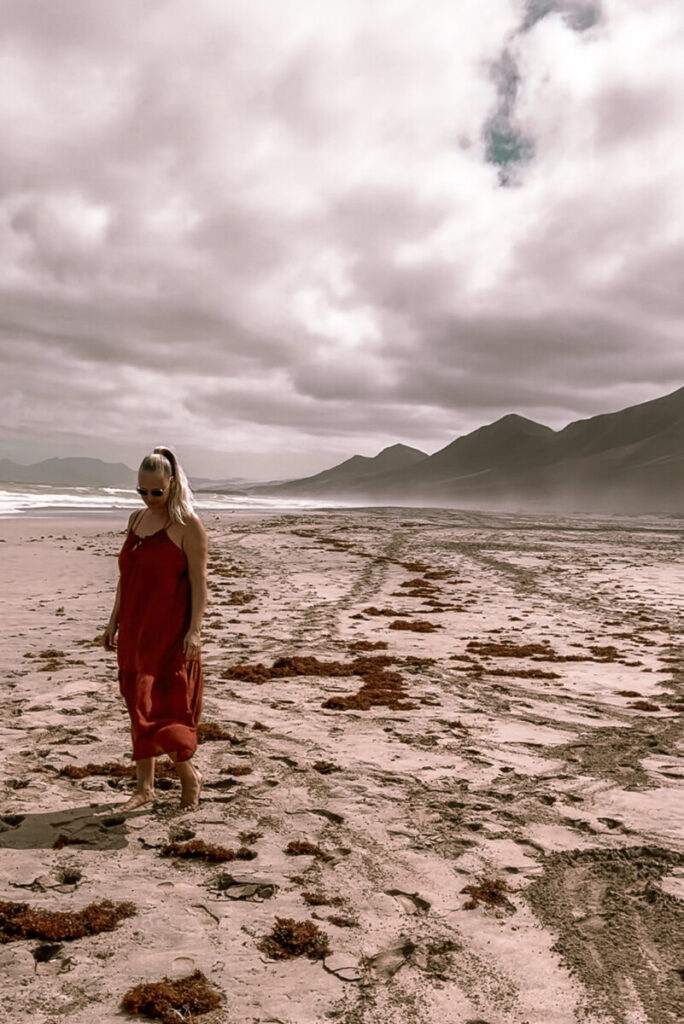
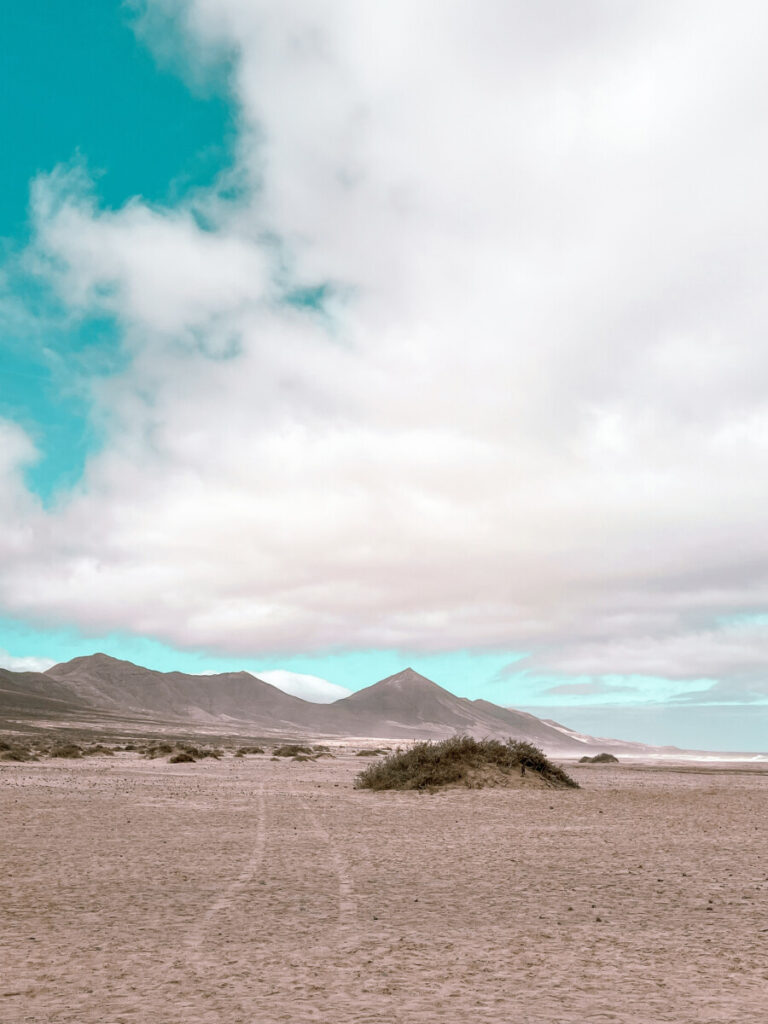
Betancuria – a historic jewel with charm
Probably the most picturesque village in Fuerteventura is the former island capital, Betancuria. It’s the oldest village on the island and feels like time has stood still. The main attraction is probably the beautiful church, but it’s also lovely to just wander through the mountain village, enjoying the charming mix of white washed houses and palm trees. Since Betancuria is in the center of the island, it’s usually less windy and the temperatures stay mild, even in winter.
Betancuria has several picturesque cafés and restaurants, but two really stood out for us. Terraza Santa Maria is lovely for its terrace with stunning mountain views. For us boho lovers, though, the real highlight was La Sombra. The beach-bar-style restaurant is so relaxed it could easily be on a beach in Thailand, Bali, or the Caribbean. It’s famous for its tasty burgers (including vegan options) and tapas.
If you prefer it quiet, try to visit Betancuria early. By midday, the tourist buses arrive and the village streets get noticeably busier.
If you continue to travel south from Betancuria along the mountain road (towards Pájara), you will pass some incredibly spectacular viewpoints that you should definitely not miss. The mountain panorama is breathtaking and also a great photo opportunity!
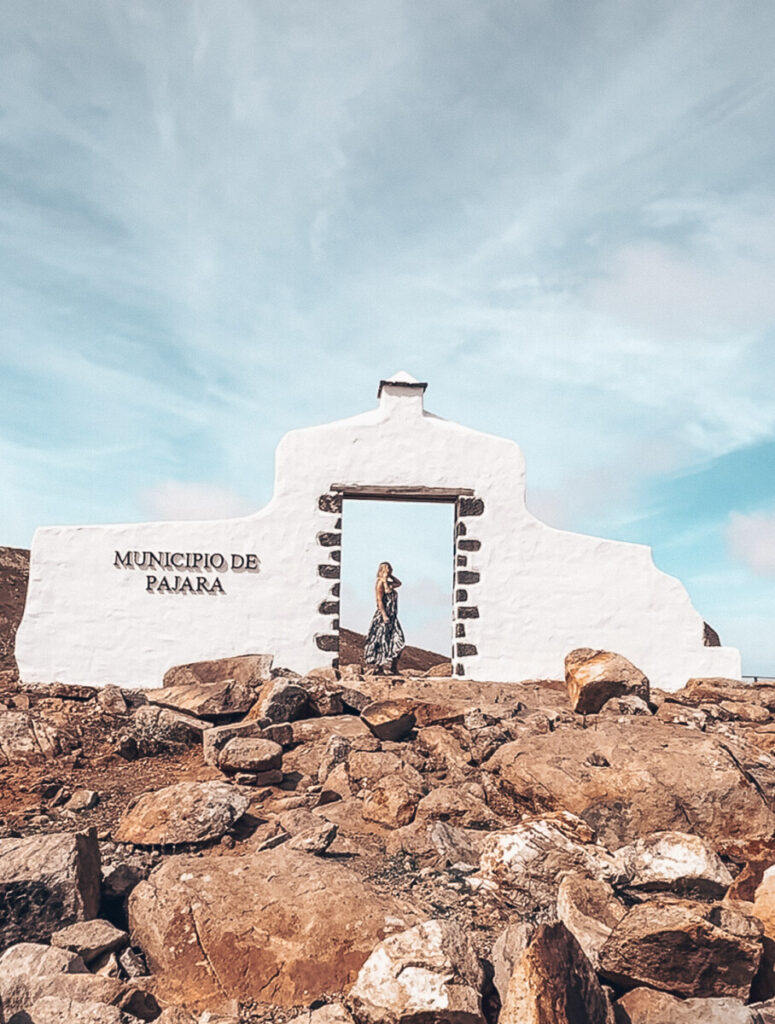
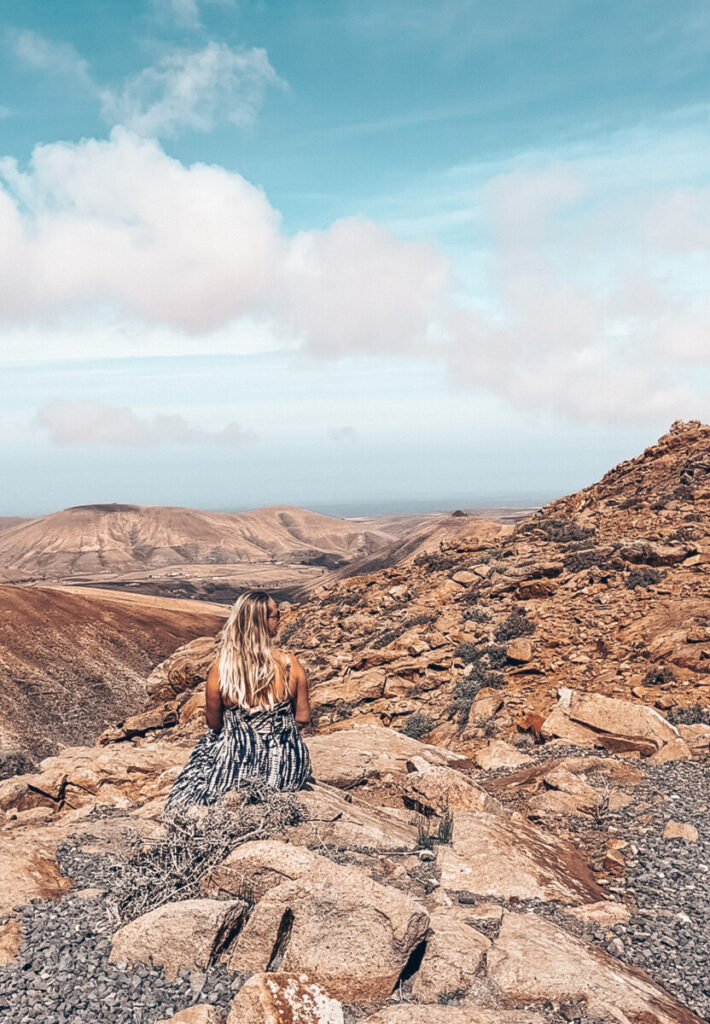
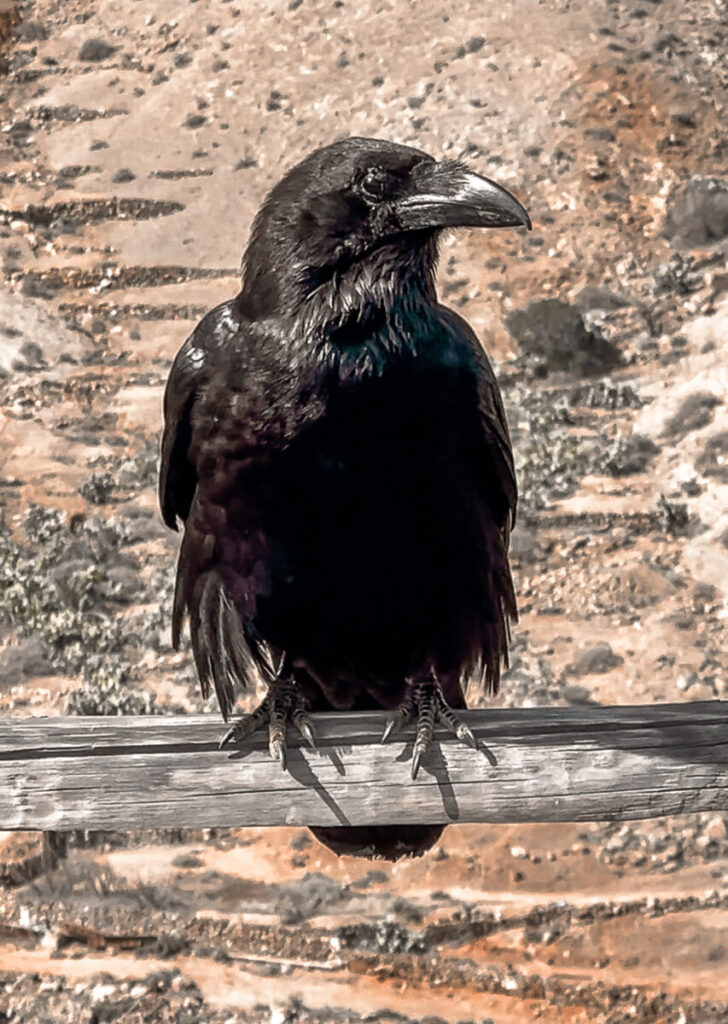
Sailing and dolphins in the south of the island
Another highlight of our week on Fuerteventura was the sailing tour in the south of the island. At the meeting point in Morro Jable, our friendly skipper welcomed us and introduced us to a few other guests on the pre-booked excursion. Chilled drinks were already waiting for us on board our beautiful sailing boat and the relaxed atmosphere immediately made us feel at ease.
We soon set off along the coast, where there is a good chance of spotting dolphins and sometimes even whales. At first we saw several dolphins in the distance, but when we sailed toward a quiet bay, they swam straight up to our boat and accompanied us for a while. It was such a special experience to see them so close.
With the sun, the calm sea and the playful dolphins, the tour was truly memorable. If you are on Fuerteventura, a sailing trip like this is definitely worth doing.
After a great stop at a deserted bay, we were able to snorkel extensively and marvel at the underwater world. Afterwards, we were treated to a huge tapas platter with something for everyone’s taste before heading back to the harbor.
Lagoon beach – also at Playa de Sotavento
If you love beautiful beaches with turquoise water, the lagoon at what is probably Fuerteventura’s most famous beach is not to be missed. Playa de Sotavento is a long stretch of sand made up of five individual beaches. In the northern part you’ll find the palm bar, while further south lies the stunning lagoon area. Here, the sky and sea blend into a breathtaking blue, and the fine golden sand crunches softly under your feet. What makes it really special is that at high tide the beach turns into a huge shallow area, perfect for water sports or simply relaxing in the sun.
Just a few minutes’ drive from Playa de Sotavento is another enchanting bay with a simple but beautiful beach restaurant – Tierra Dorada on Playa del Mar Nombre. Tapas, feet in the sand, cocktail in hand. What more can you ask for?
Royal Palm Resort and Spa in the south of Fuerteventura
Normally, big resorts aren’t really my thing, but towards the end of our Fuerteventura trip we wanted to spend one night in the south. So we spontaneously looked for a hotel with a sea view and a pool and ended up at the Royal Palm Resort and Spa. It was nice, the room had a decent sea view, and the pool area was spacious and not overcrowded. The resort is large, but it didn’t feel too busy and still had a cozy vibe, since it’s not one of those typical huge concrete hotels. We could just enjoy the sun and relax without having to plan much.
For anyone who likes bigger hotels or just wants an easy, stress-free stay by the sea, it’s definitely a good choice.
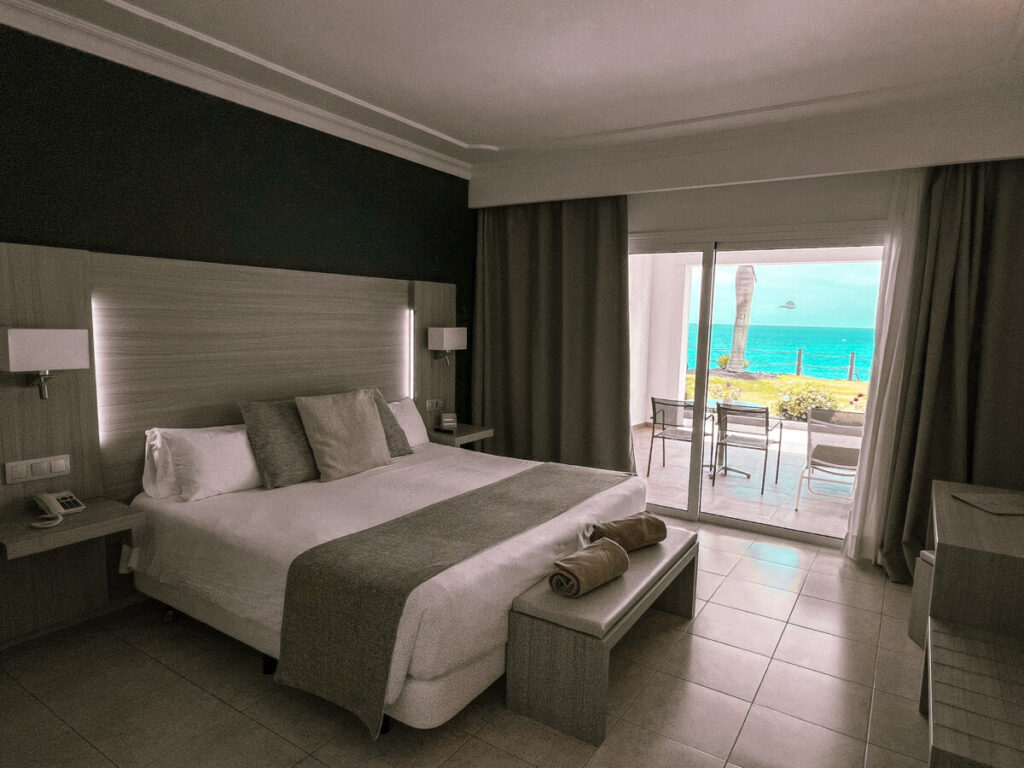
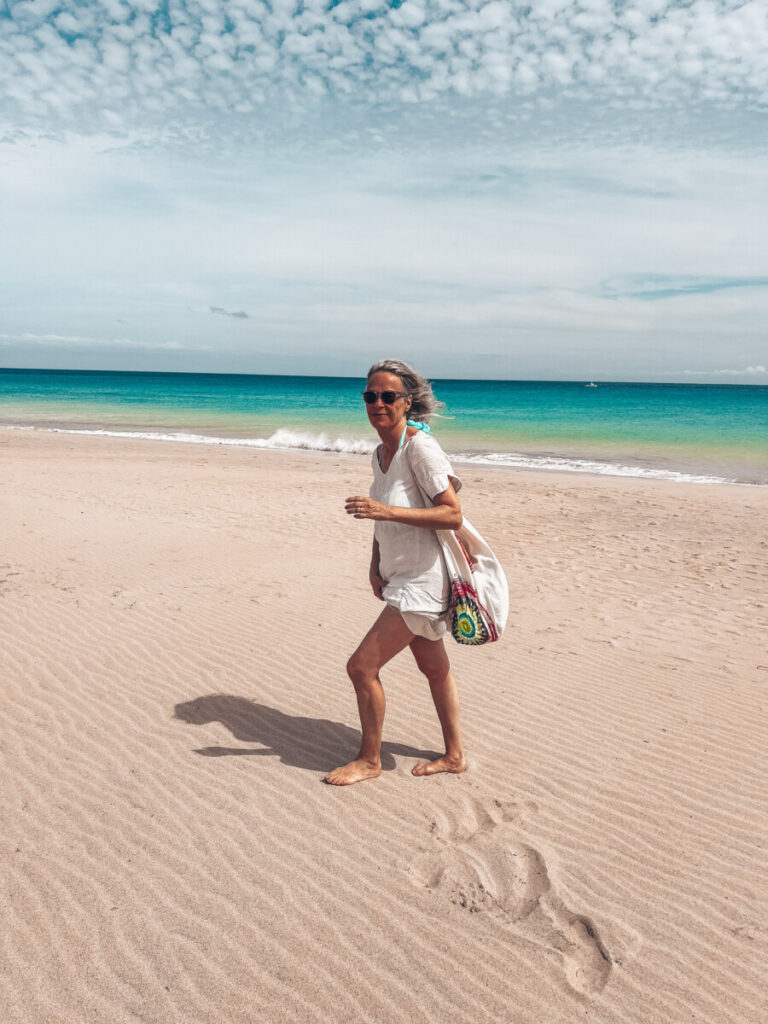
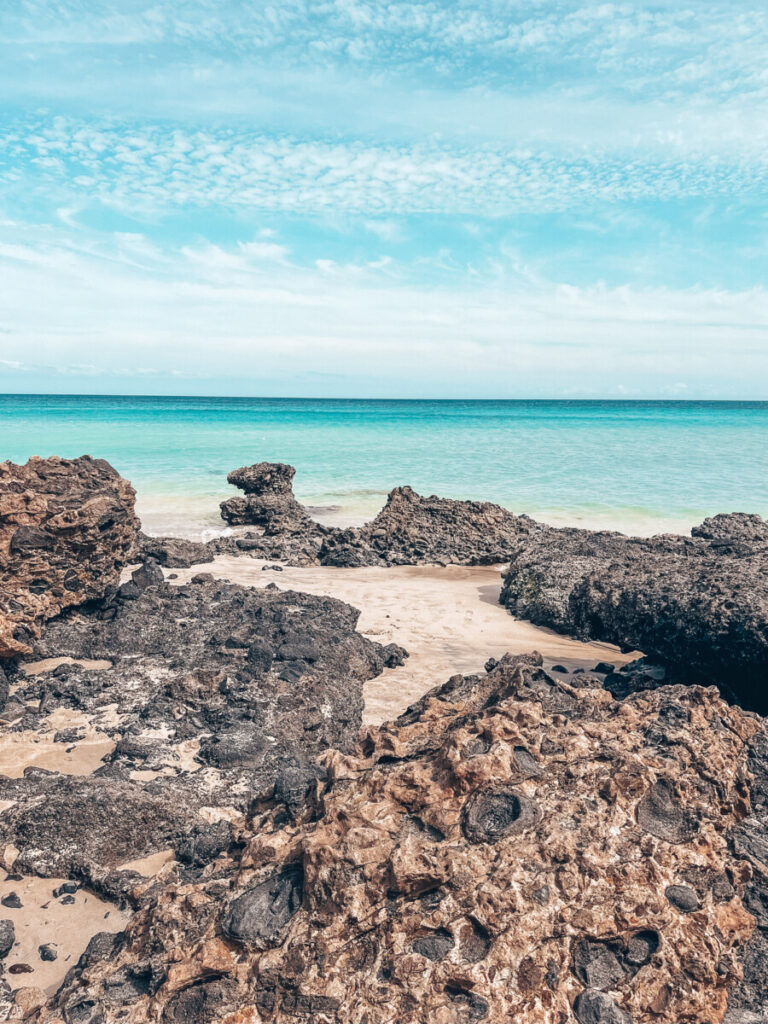
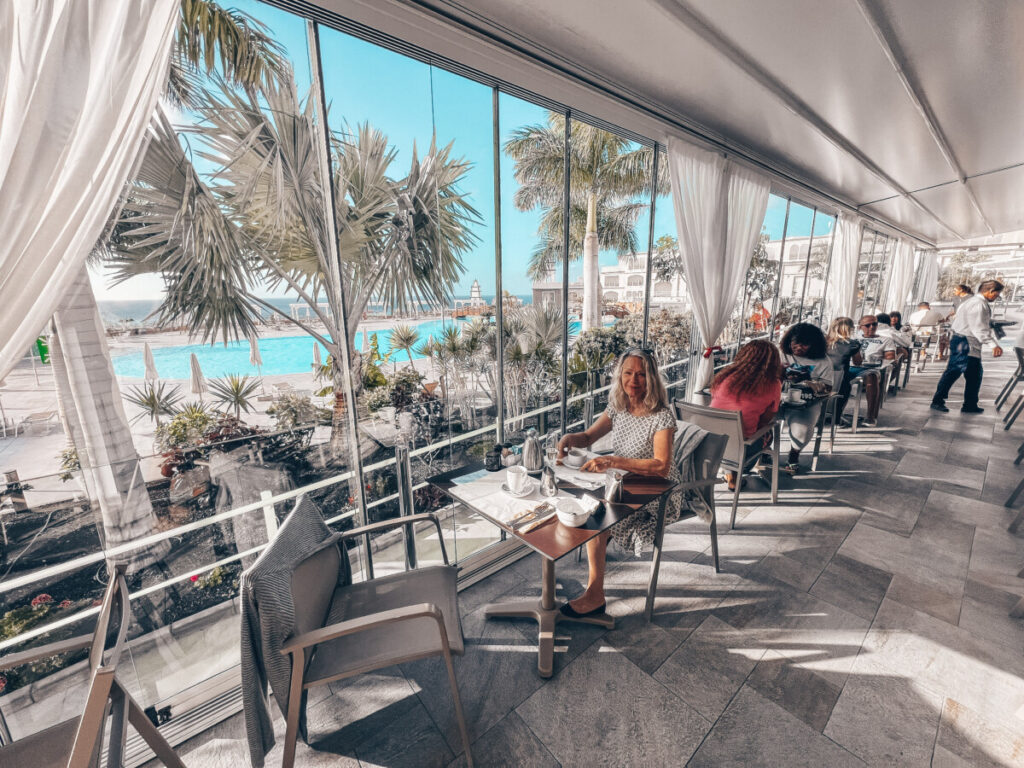
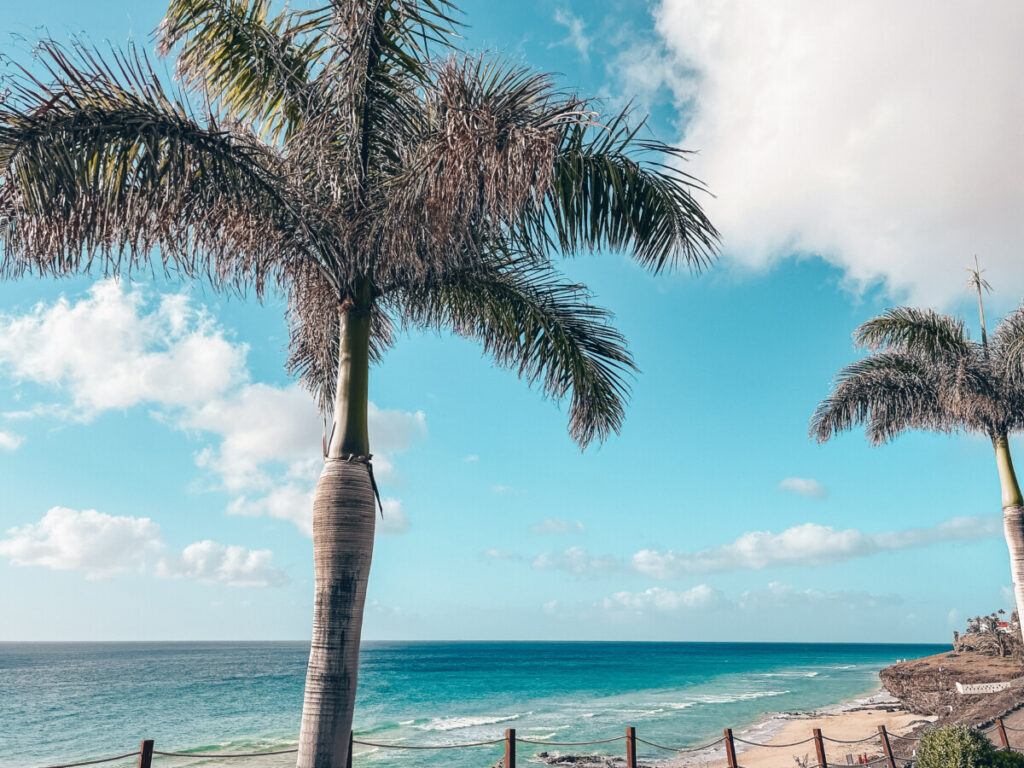
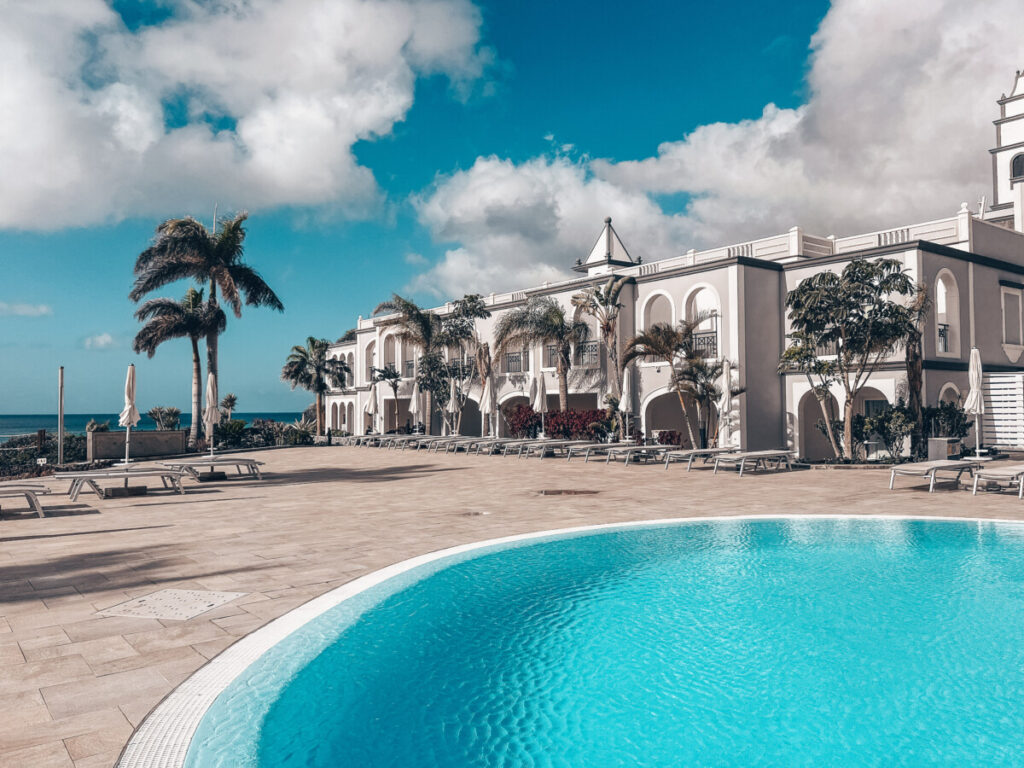
Fuerteventura is worth visiting all year round. If you’re not in the mood for rain in Europe during the winter, this is the place to be. At first, the island might seem a bit barren, but it’s actually really diverse: endless dunes, red and brown mountains, volcanic rock, small villages, and of course, miles of sandy beaches.
On top of that, there’s the relaxed vibe, making it the perfect place to just slow down and unwind.
Short & sweet – Fuerteventura facts:
– Arrival: 4-5 hours flight from Germany
– Temperatures: summer 25-30 °C, winter 18-22 °C
– Climate: mild, rain rare
– Best time to visit: actually always, depending on the desire for beach or sport
– Typical: dunes, beaches, mountains, small villages, surfing, beach bars
– Tip: landscape seems barren, but is mega varied and photogenic
Still can’t get enough of the Spanish islands? Then take a look at my posts for the best tips for Ibiza or Formentera.

